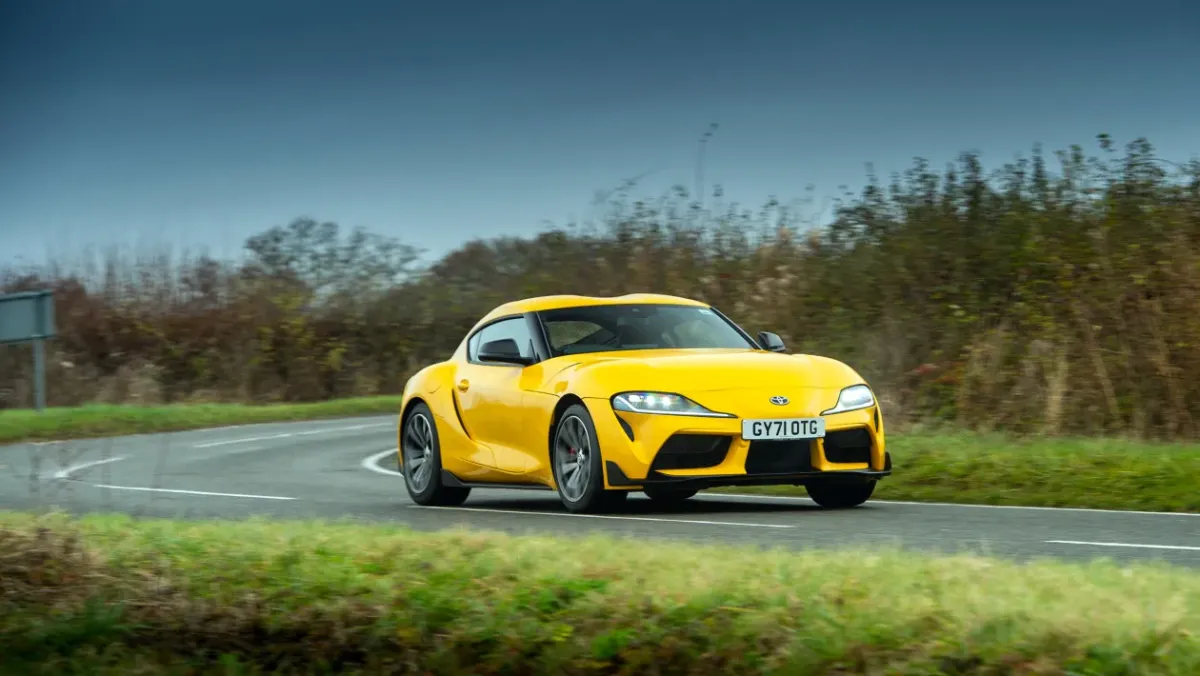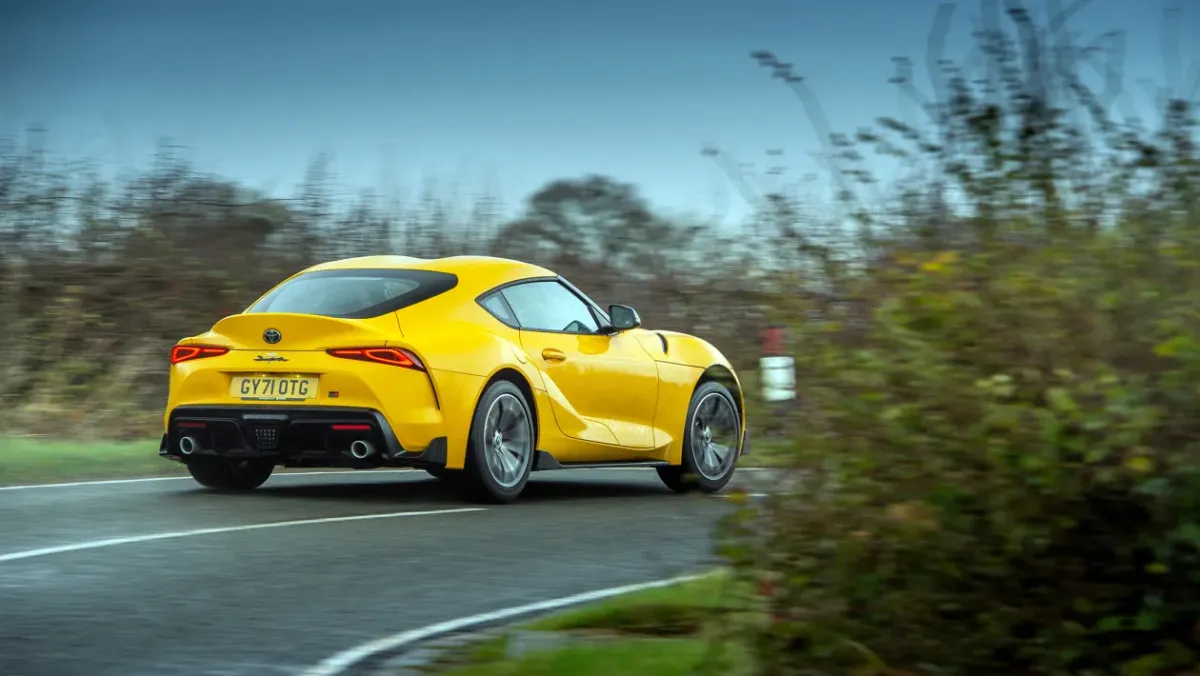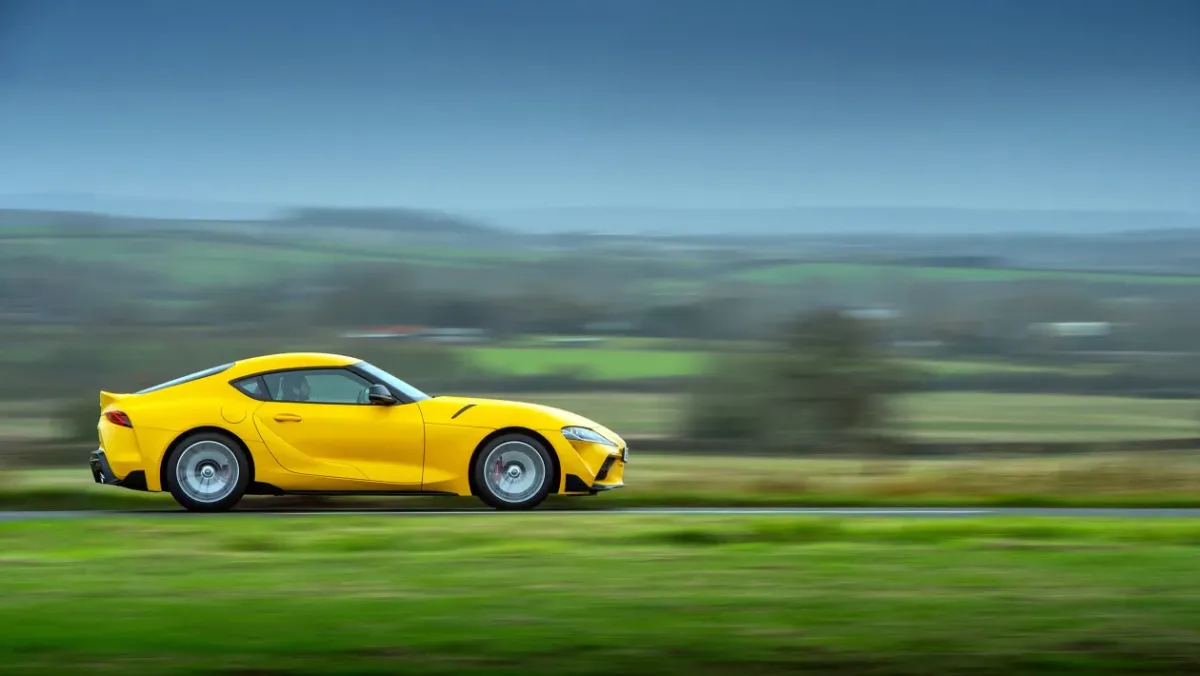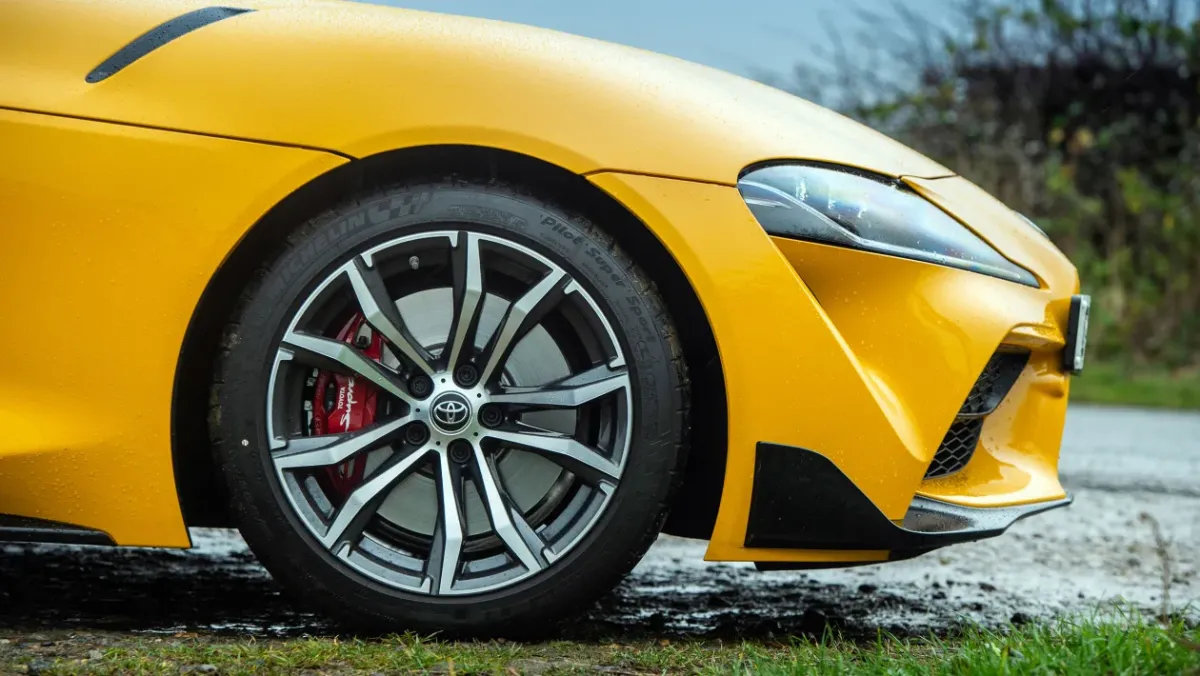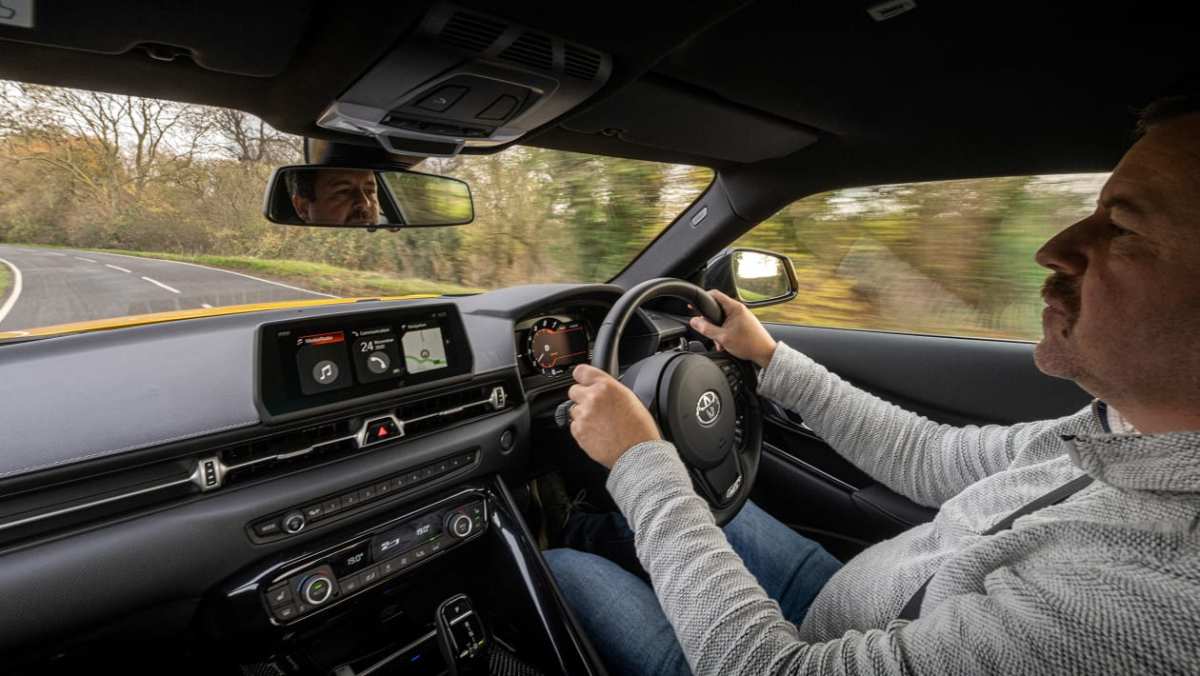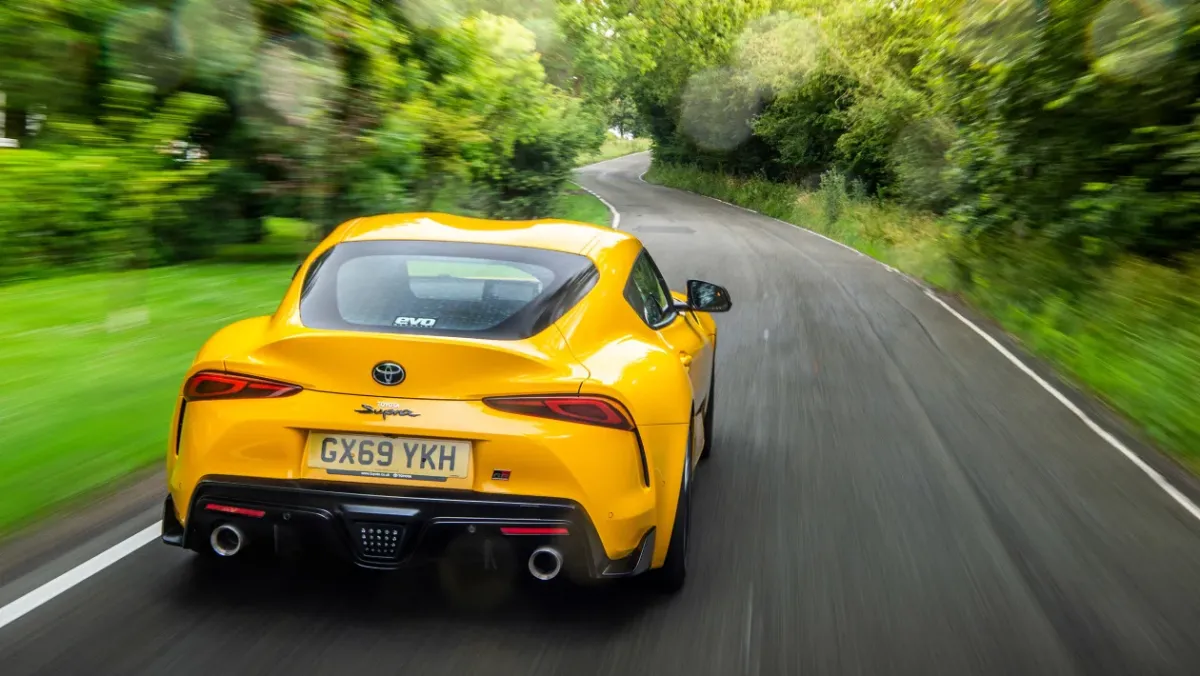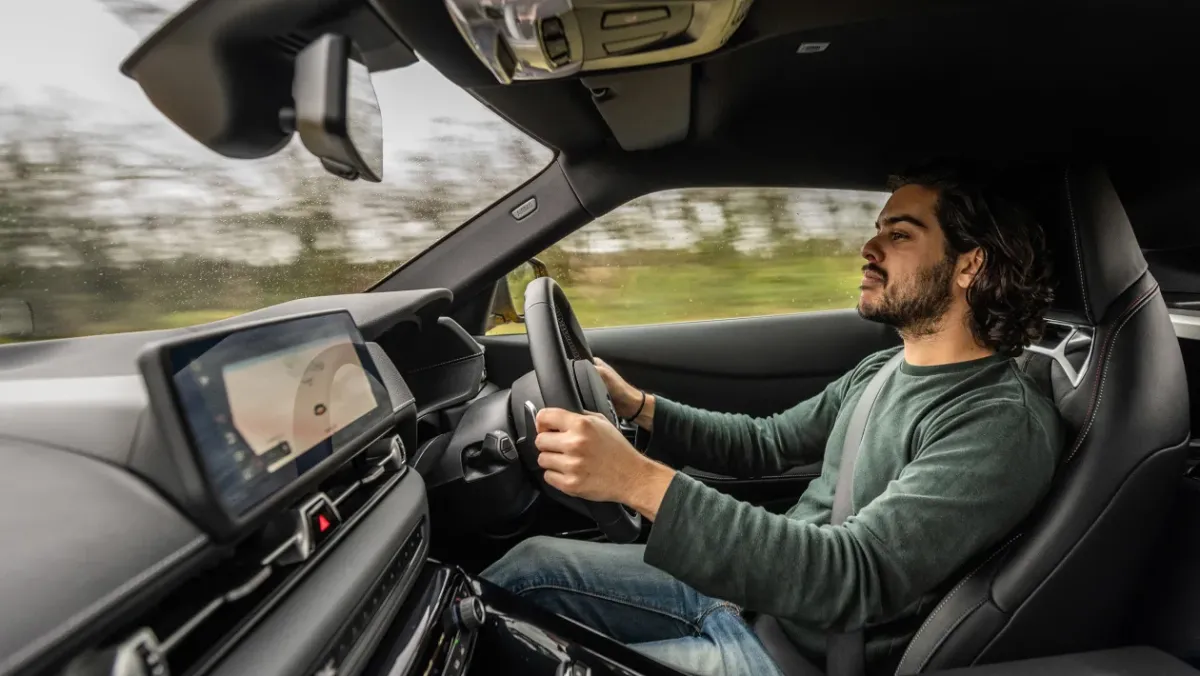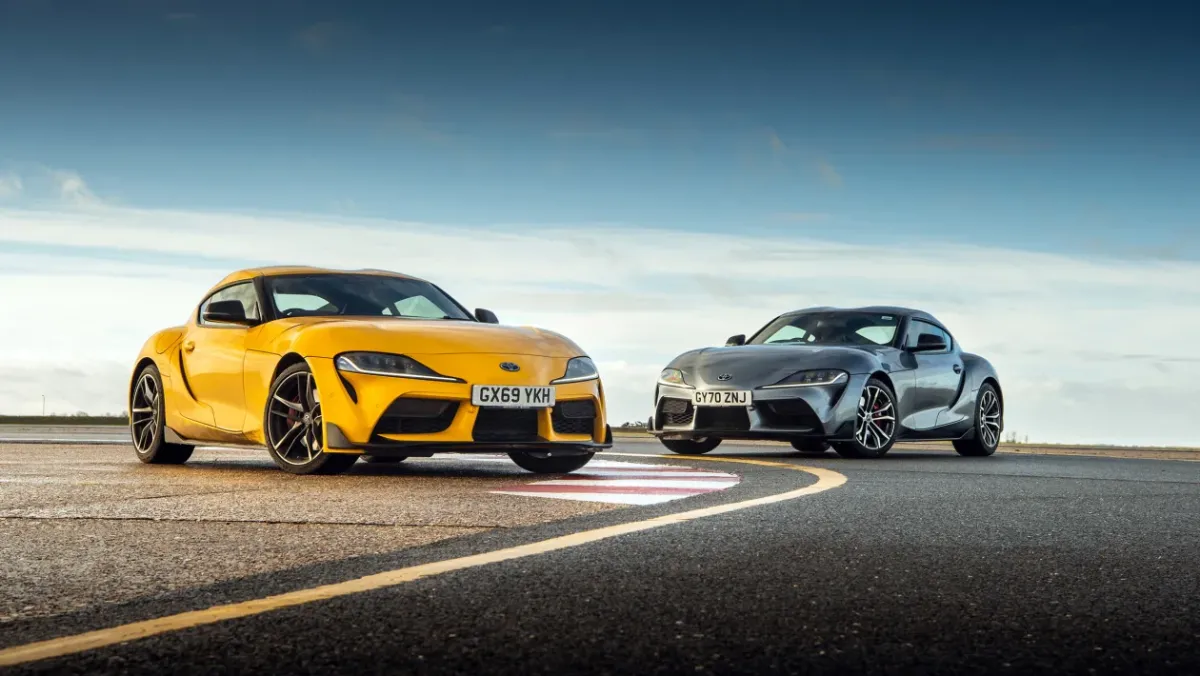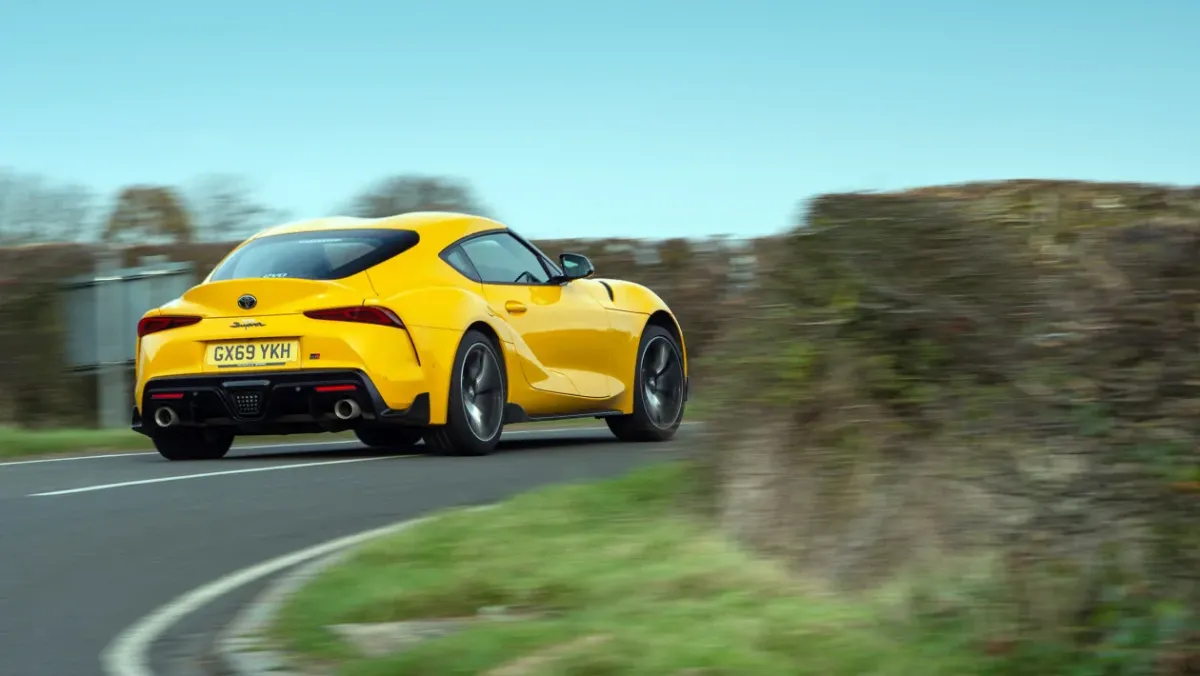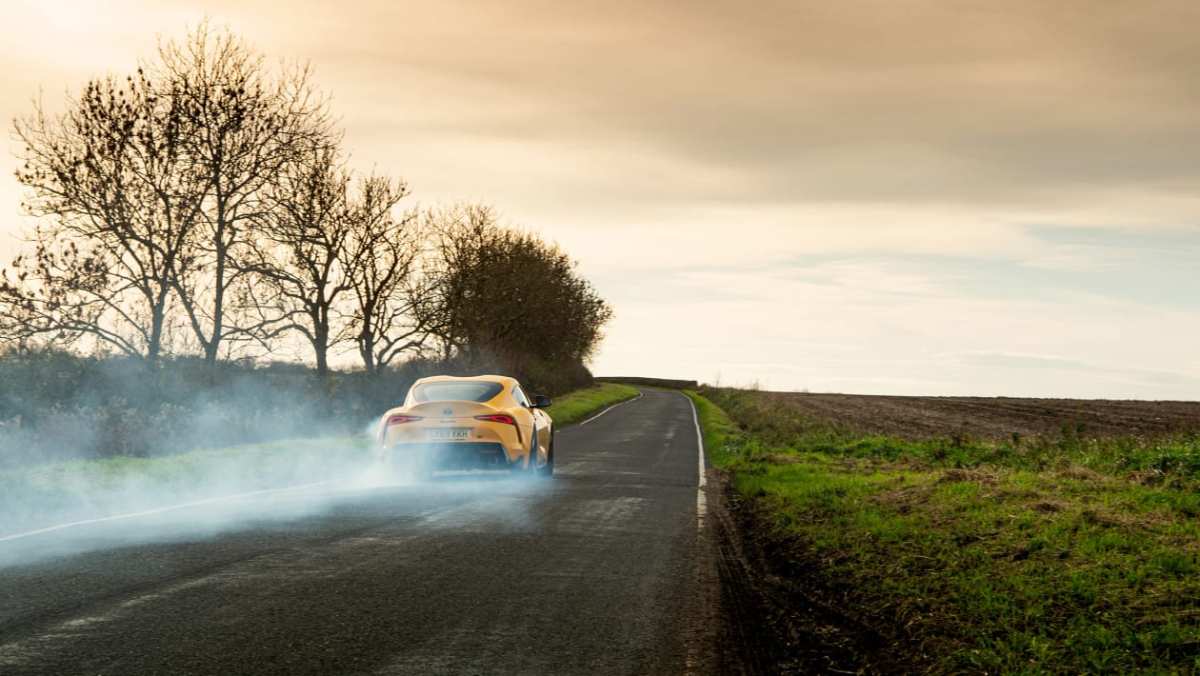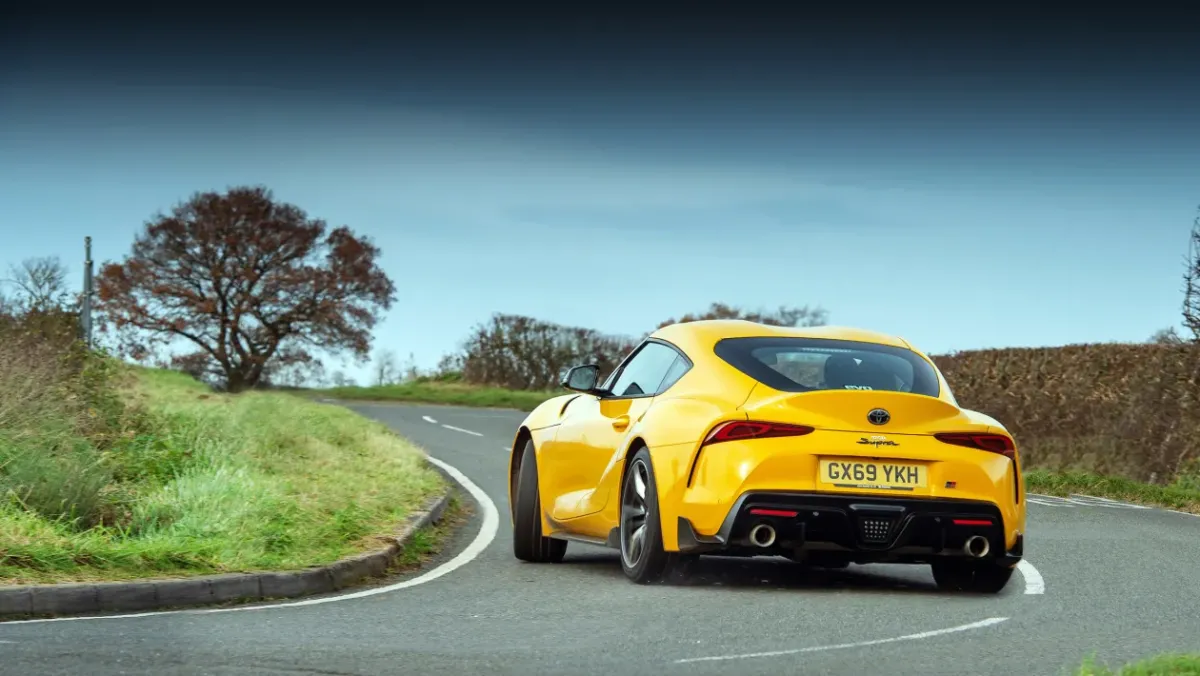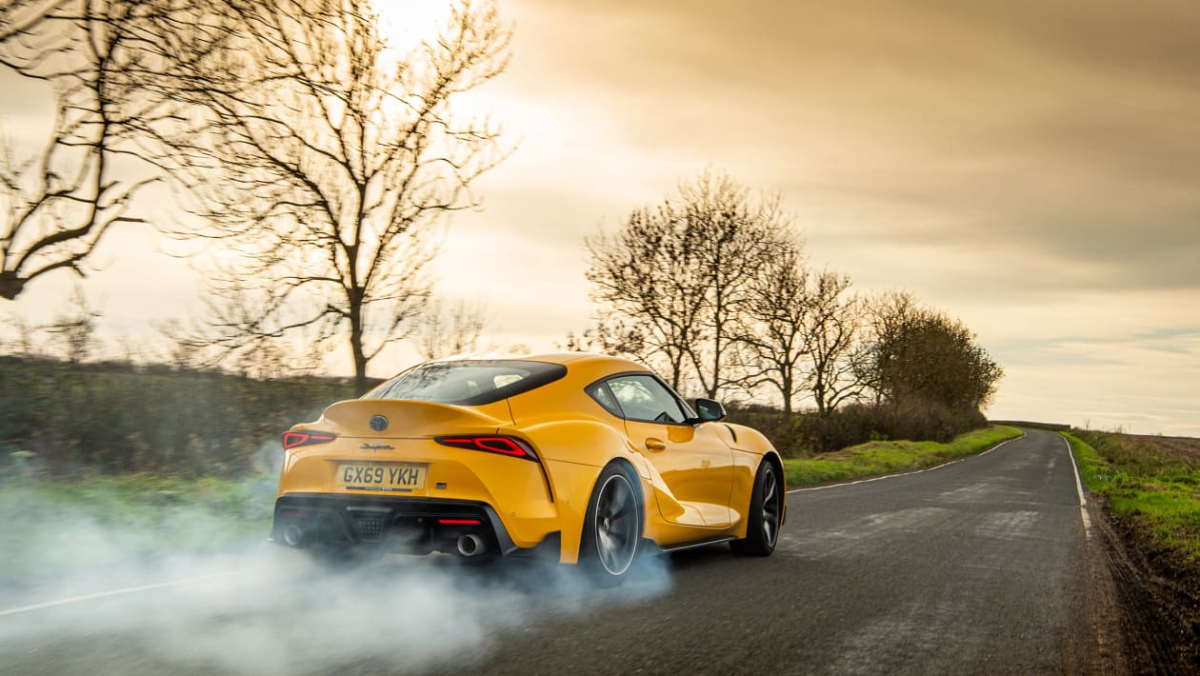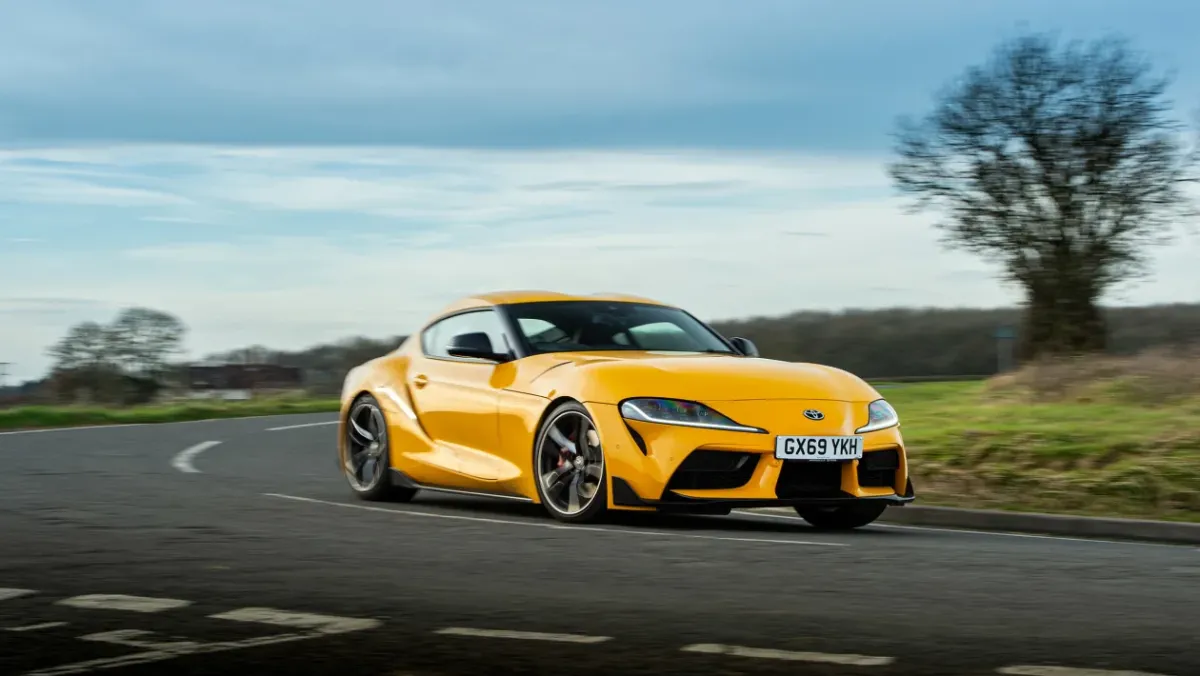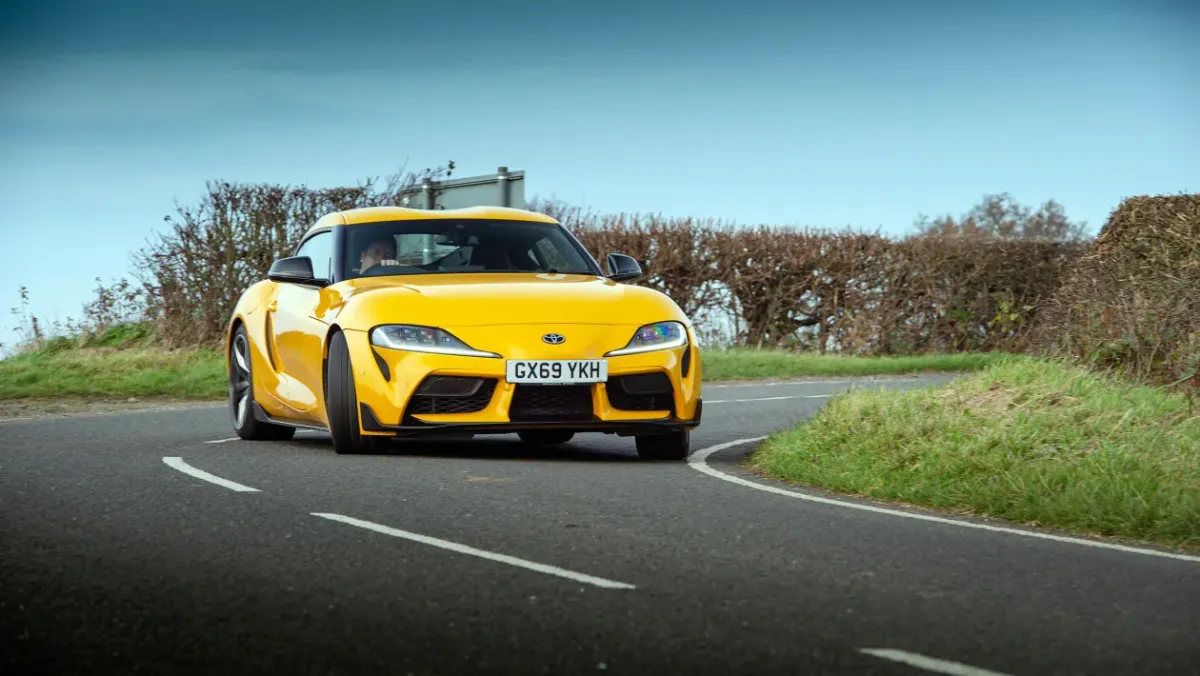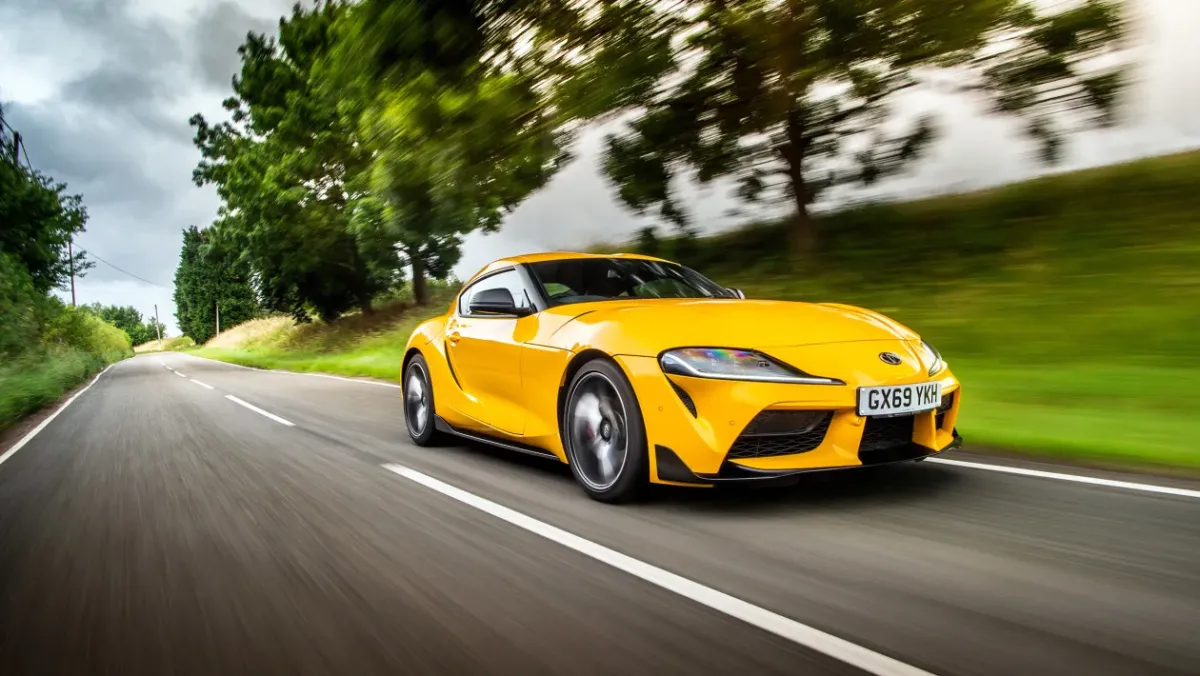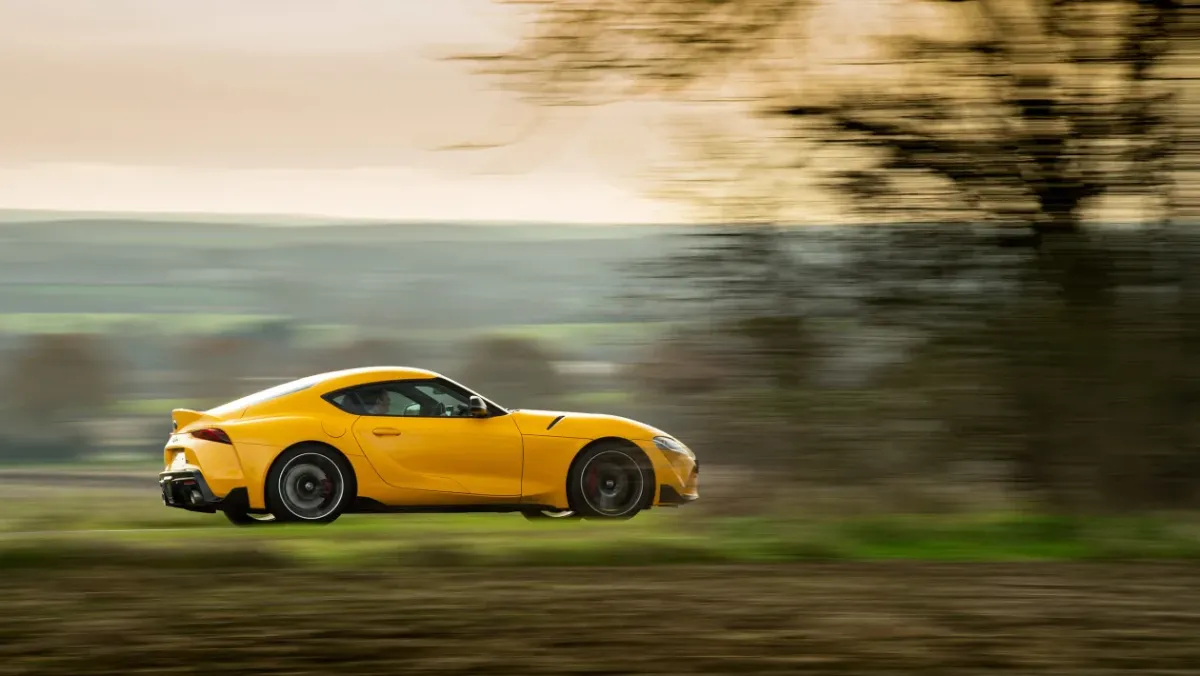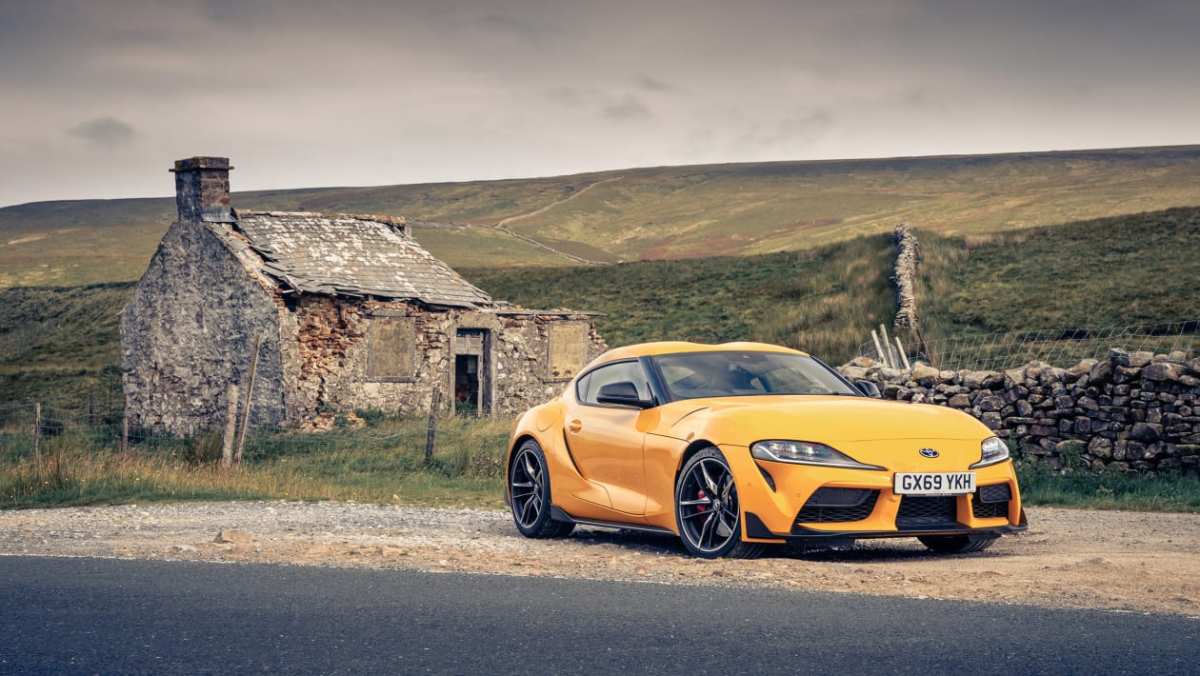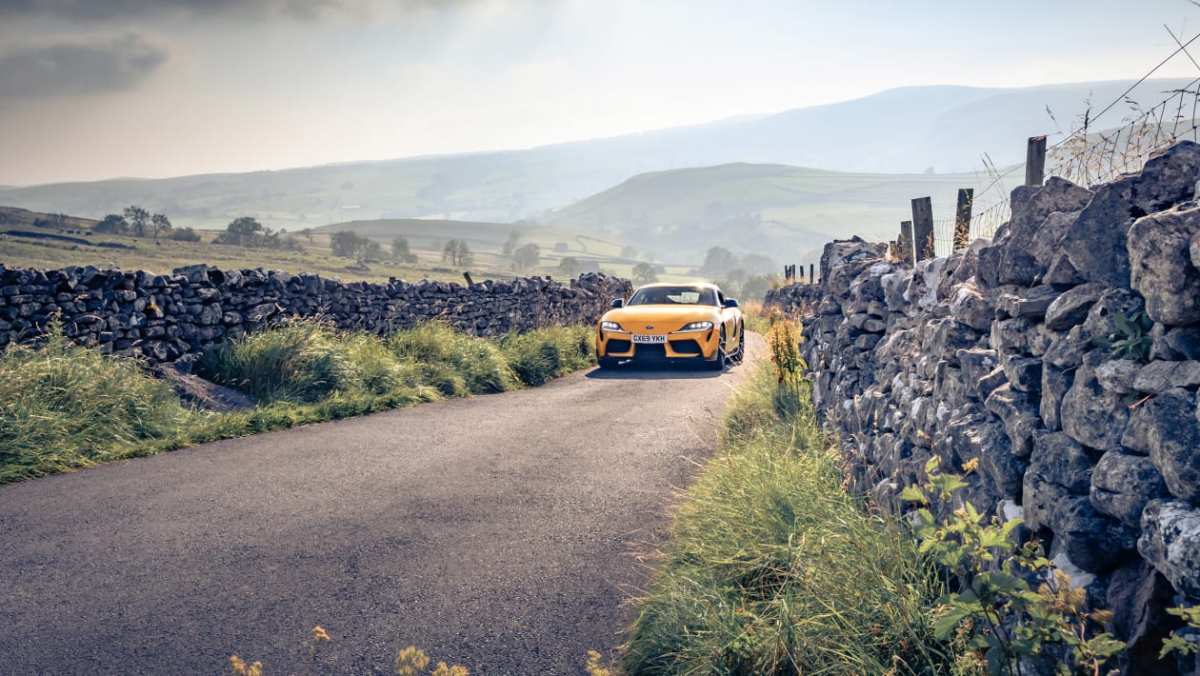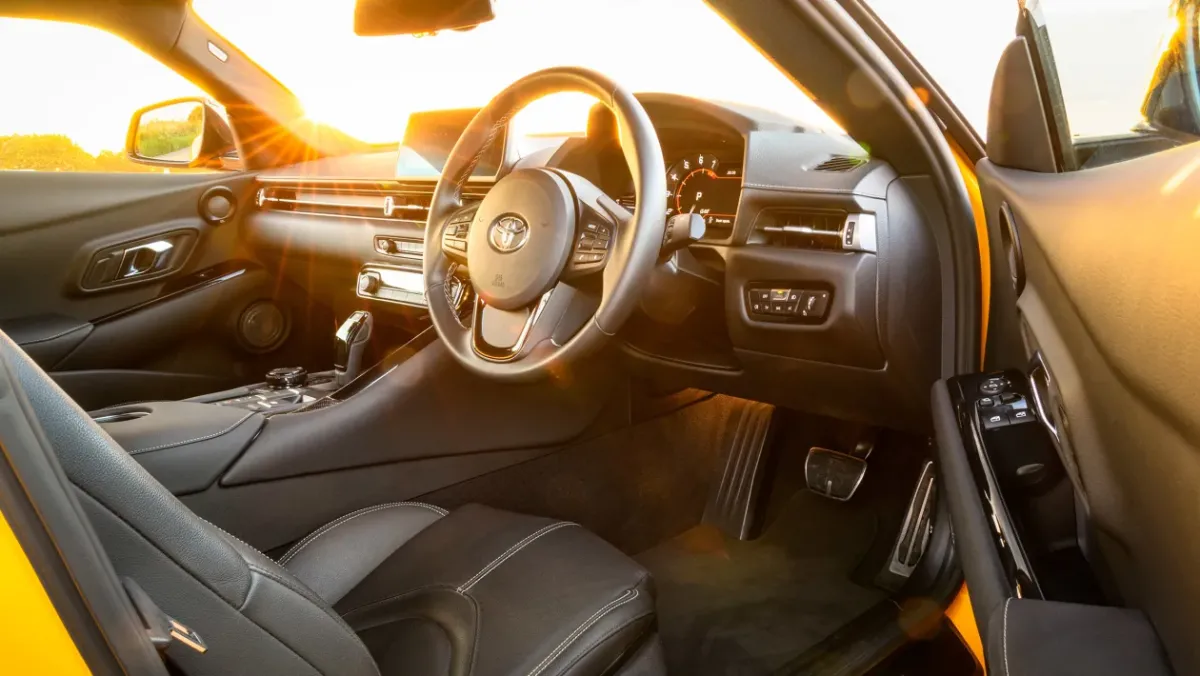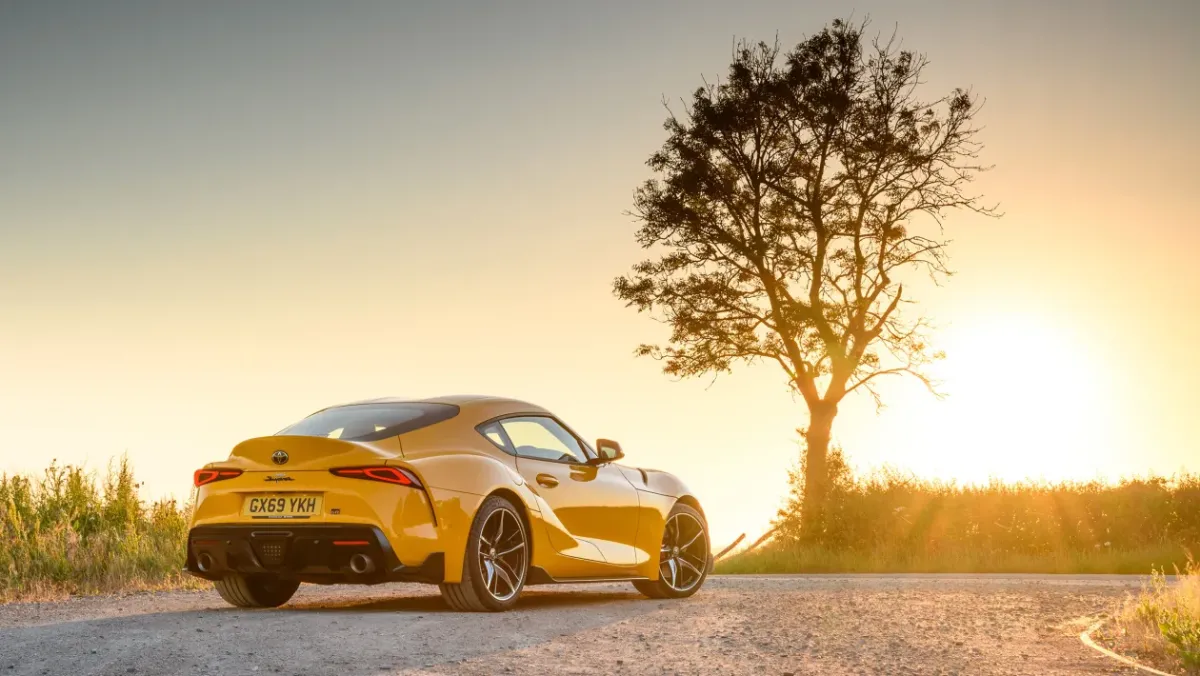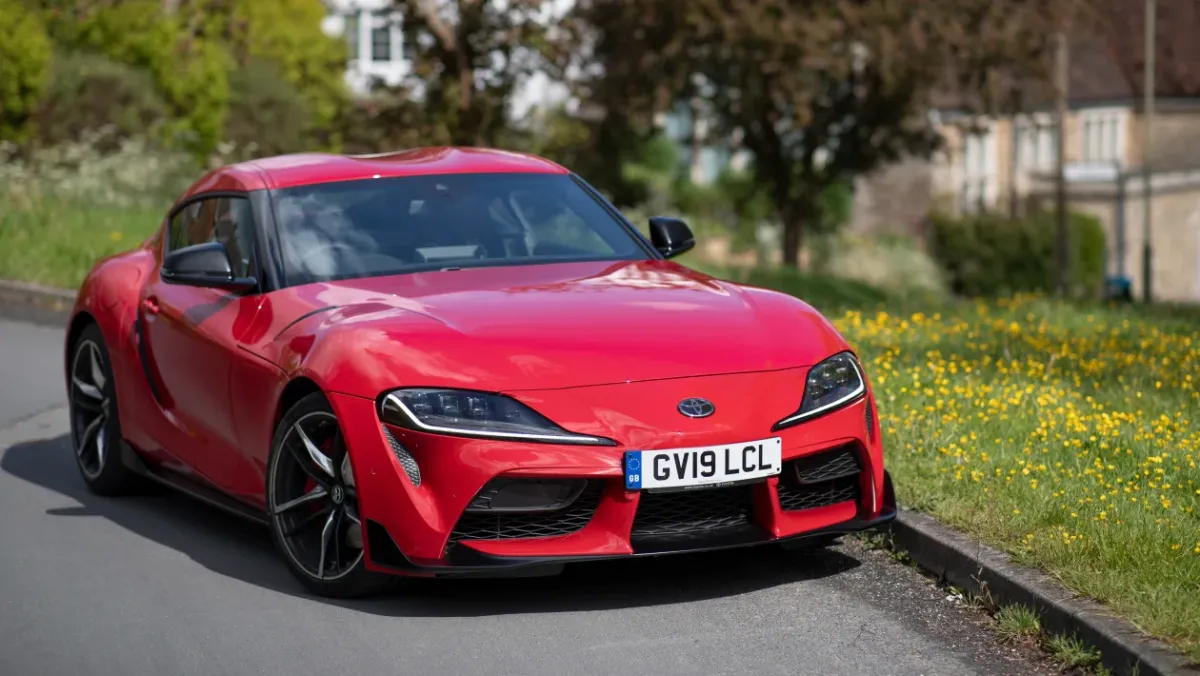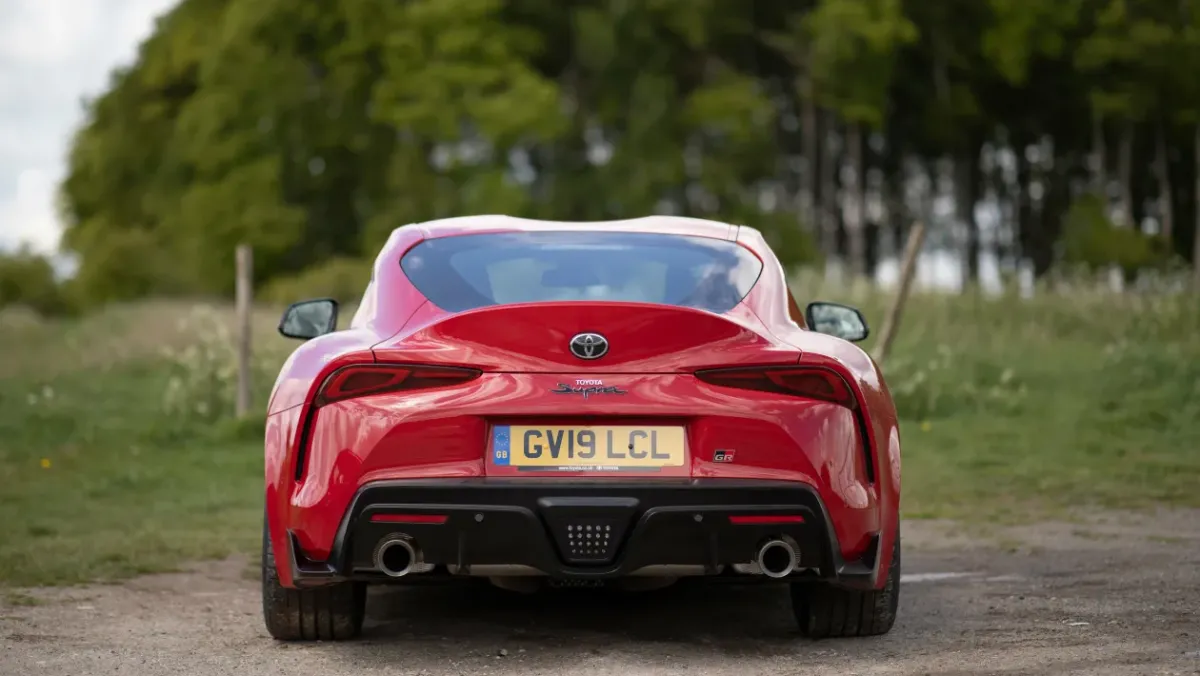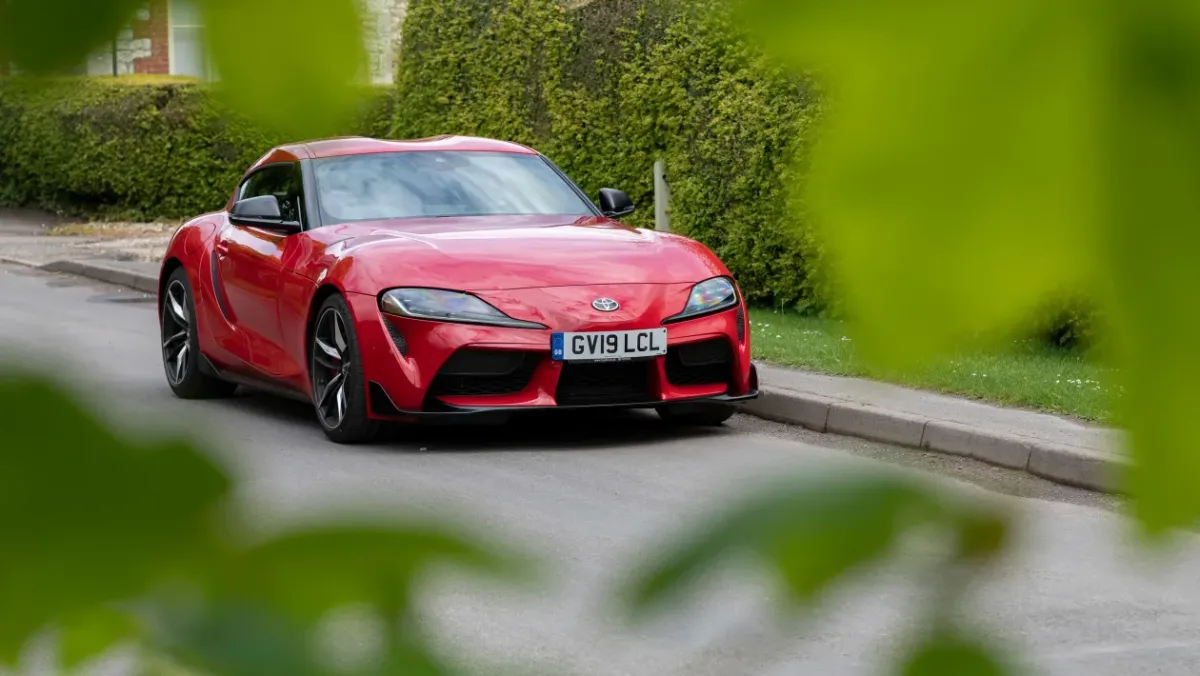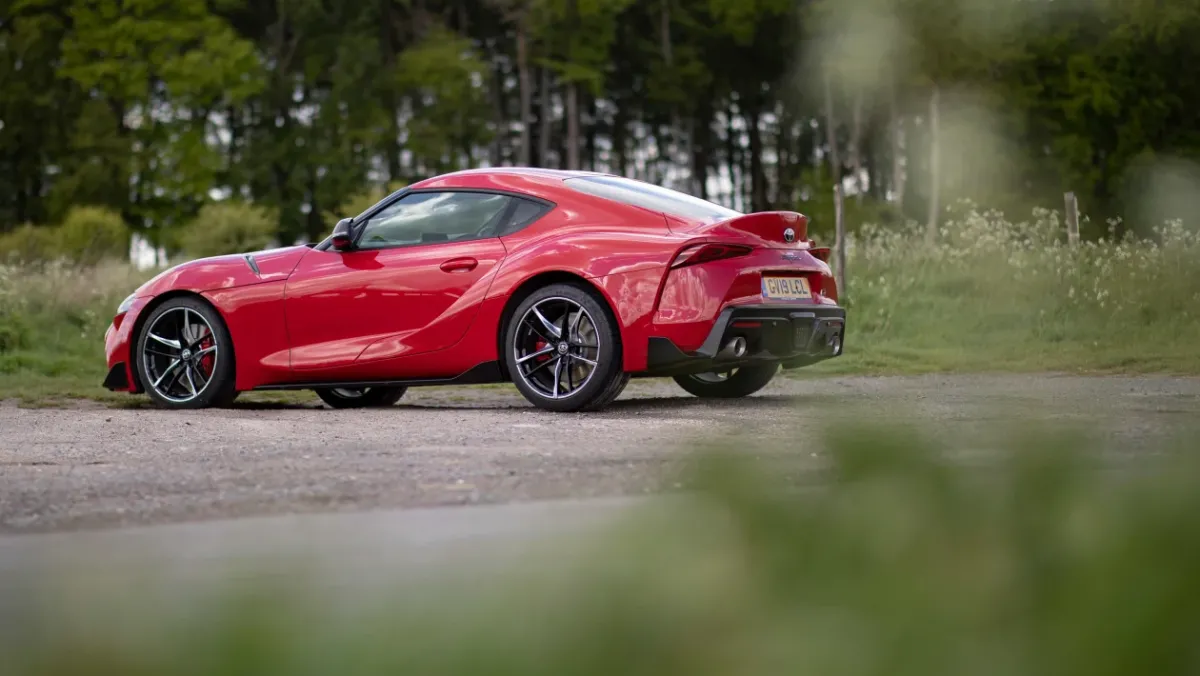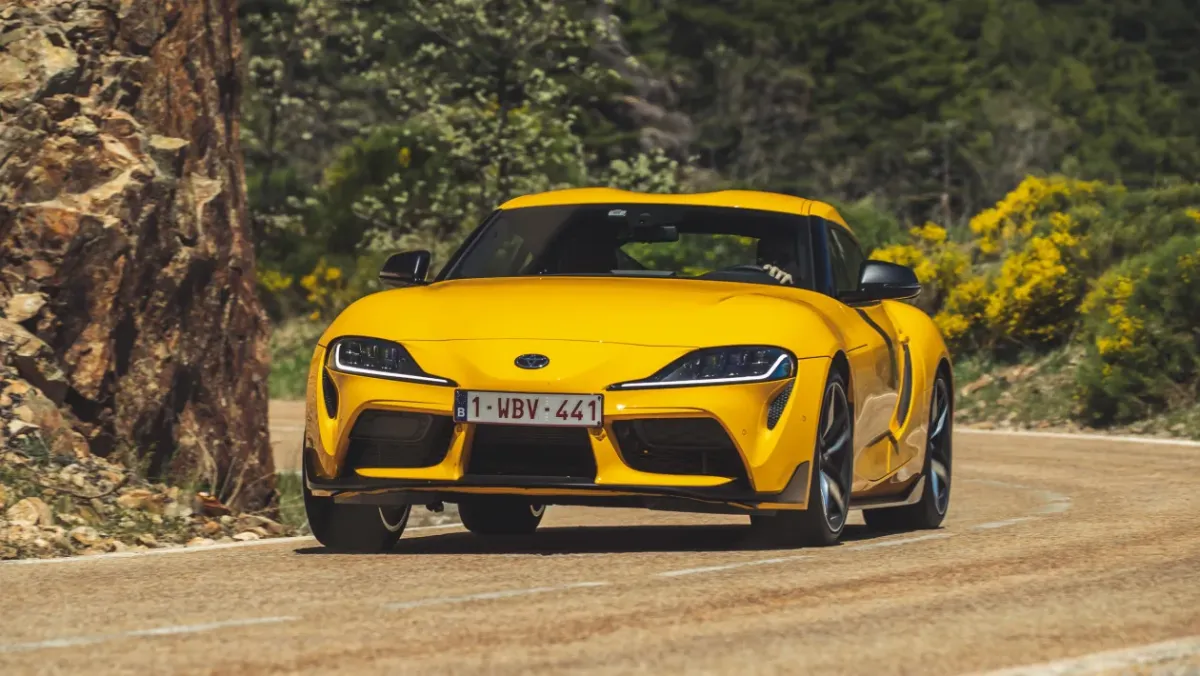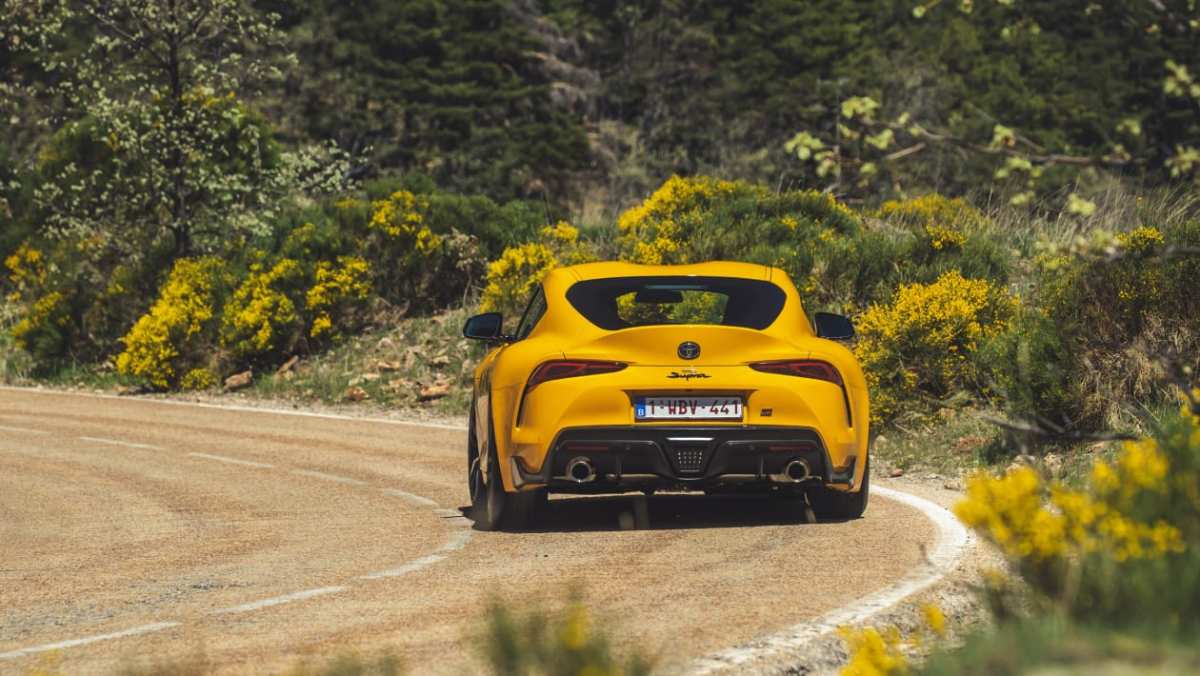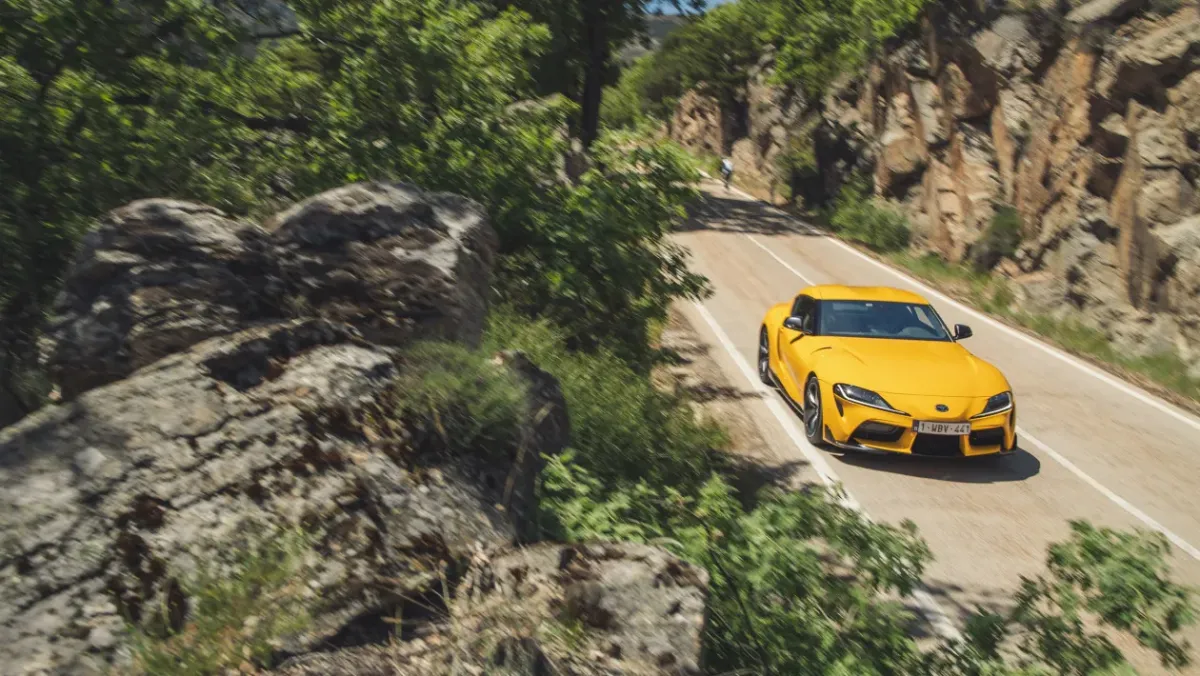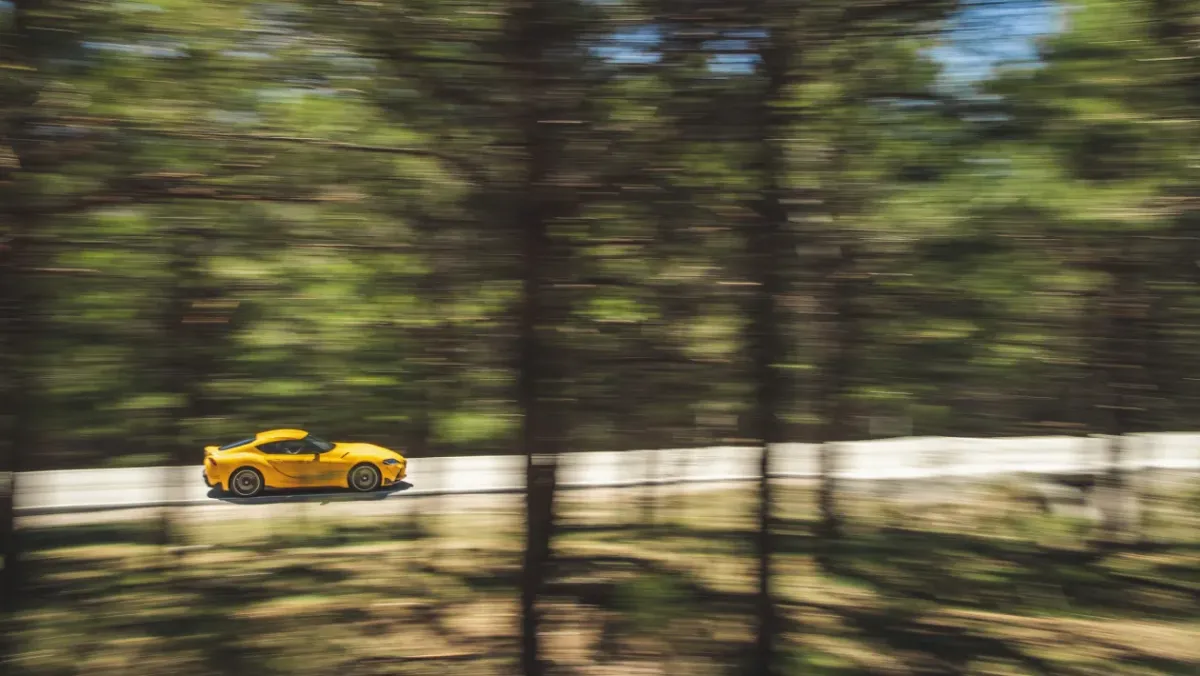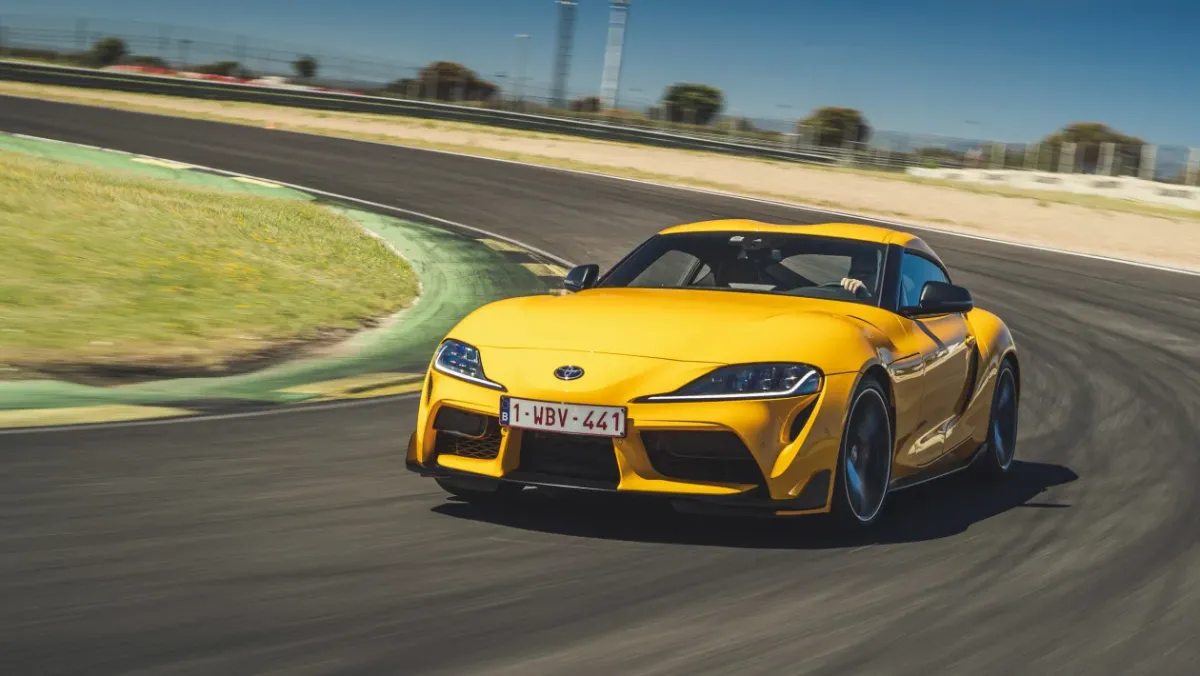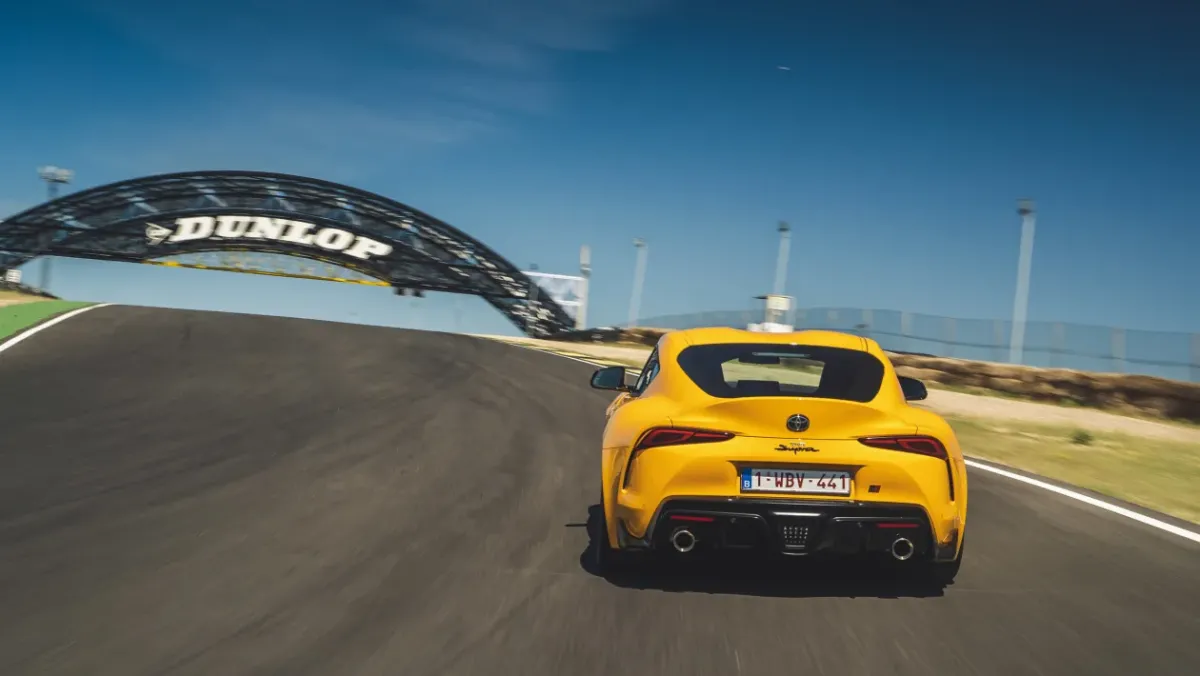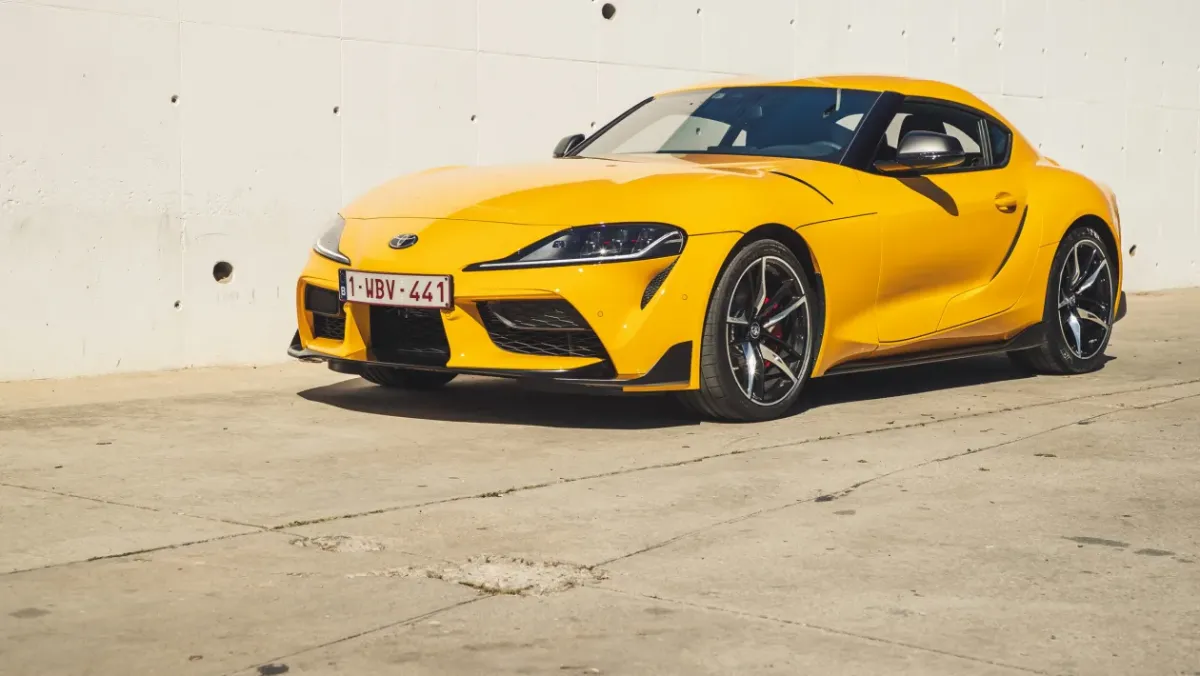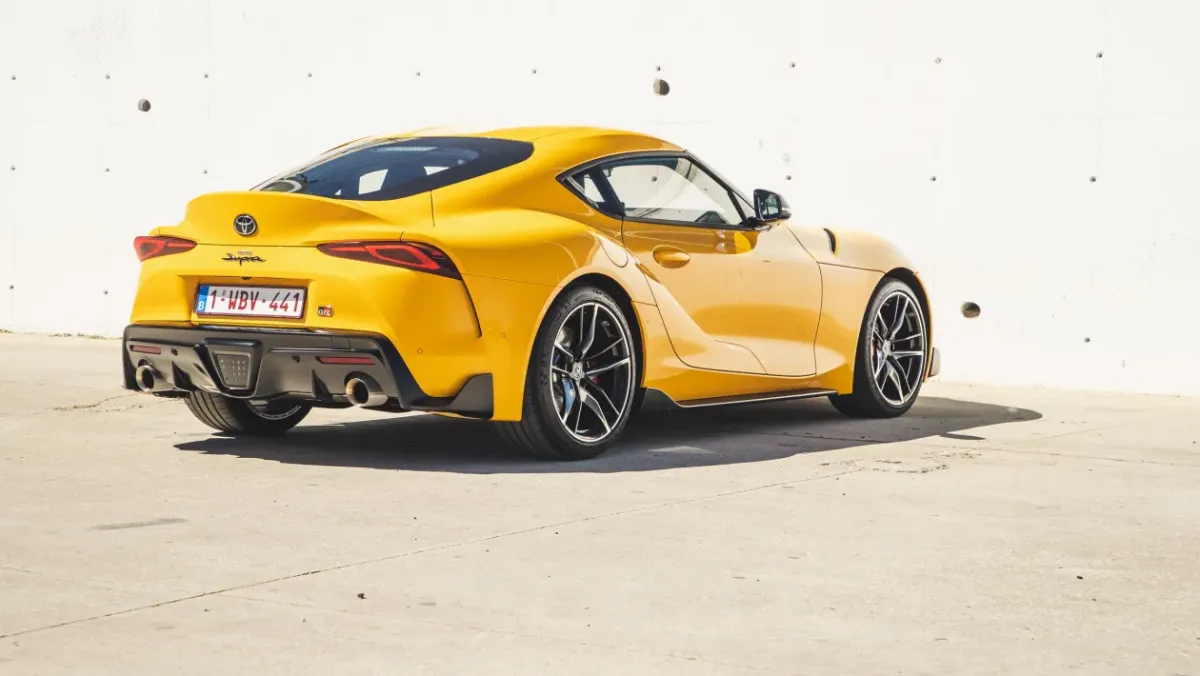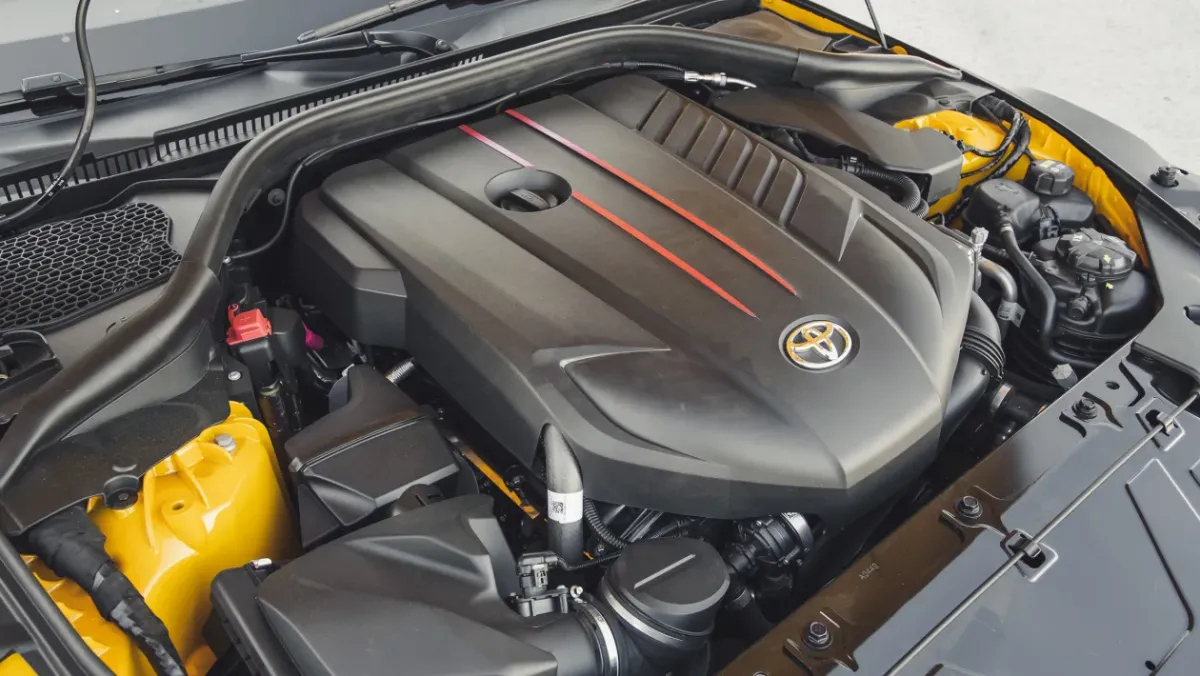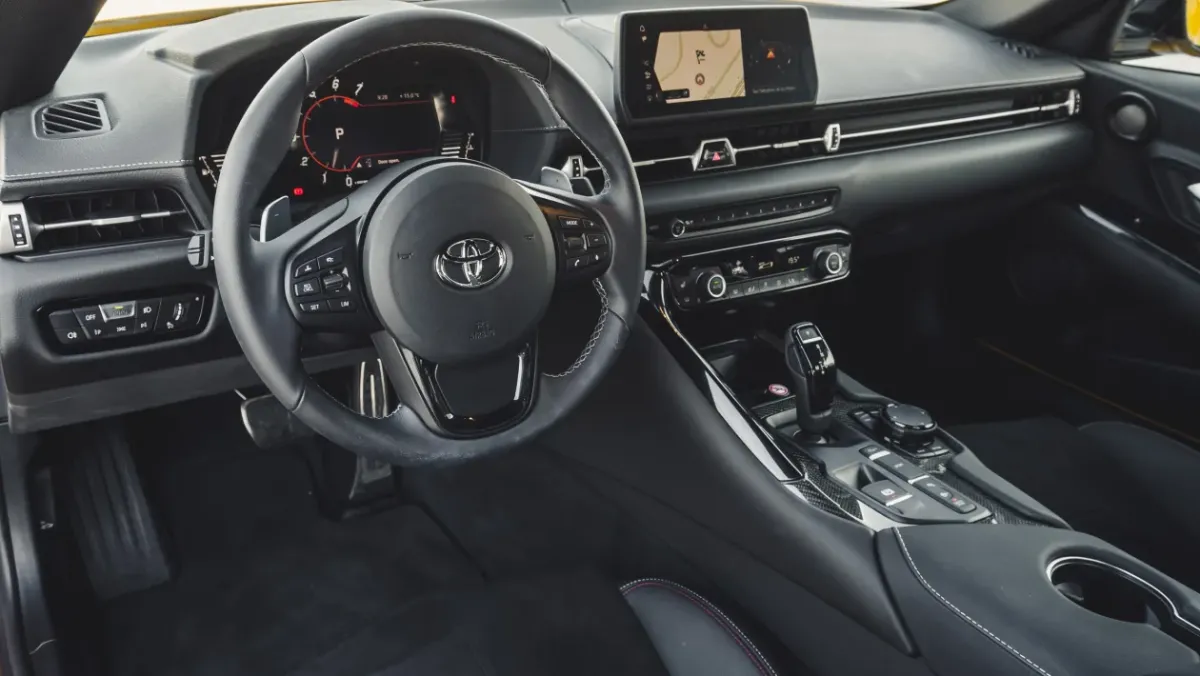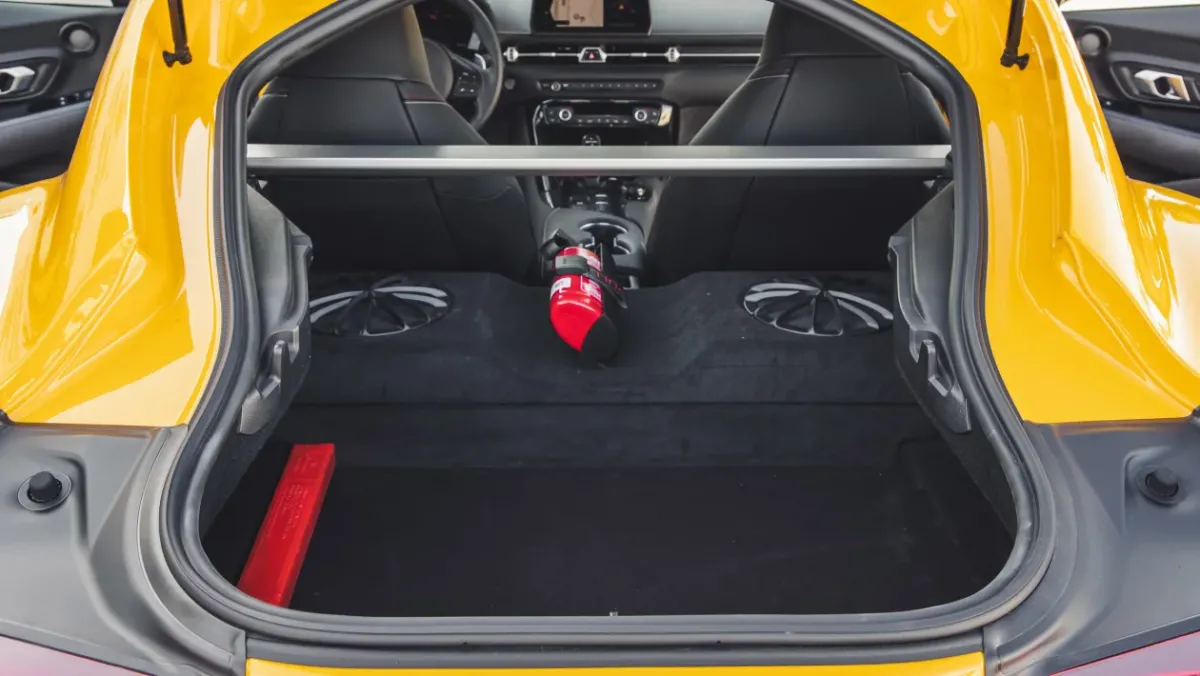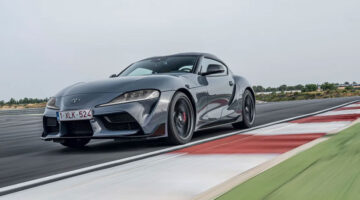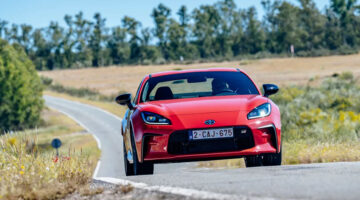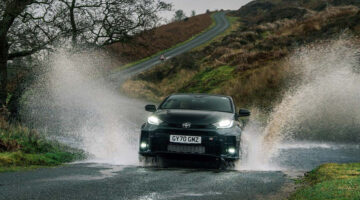A divisive, but ultimately fascinating sports car that has its flaws, but fights back with charisma
| Agile chassis and polished powertrains | |
| Lacks feel, feedback and bite, rivals are more engaging |
When Toyota launched the GR Supra in 2019, it’s fair to assume that we all took more interest in the historical precedence of the Supra bit of its name than we did GR. But now, three years, two fabulous GR siblings and a new manual transmission later, the Supra’s relevance to its GT-like predecessors has almost completely passed, leaving behind a curious two-seater sports car that we feel is only just now starting to reveal its full potential.
In the three years since its launch, the GR Supra range in the region has grown to include a four-cylinder variant, and more recently a manual version that will arrive later in 2022. It’s the latter variant that will also bring about some meaningful changes to the set-up on all subsequent Supra models, but for now we’ll focus on the automatic four- and six-cylinder variants, which while still flawed in many respects have settled into an interesting sports car when so many others are biting the dust.
While our four-star rating indicated that the Supra is good, it doesn’t yet offer any truly outstanding characteristics that elevate it beyond that and into the realms of the very best. It doesn’t have the sparkling powertrain of the Porsche Cayman GTS 4.0, the agility of an Alpine A110, nor the balance of its smaller GR86 sibling. But there’s still plenty of appeal in this most distinctive of sports cars.
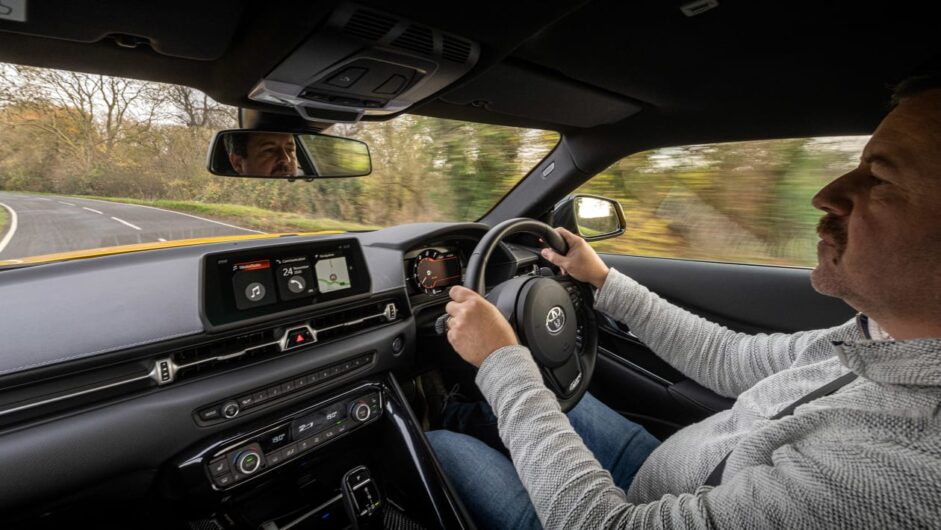
Prices, specs and rivals
The Supra is available in a single Pro grade as both four- and six-cylinder models. The base 2.0 Pro will set you back $56,905, making it significantly more expensive than the GR86 which cost from $35,930 for the 90 minutes that it wasn’t sold out in the region. GR Supra 3.0 Pro models cost $66,935, which is $2250 more than when it was initially launched, and puts it right in the thick of rivals such as the Alpine A110, Porsche 718 Cayman GTS 4.0 and Lotus’s new Emira.
As mentioned above, Toyota is in the process of giving all Supras a gentle set-up change, with a focus on reducing the sometime snappy handling characteristics by firming up the anti-roll bar bushings, recalibrating the adaptive dampers and rear differential, and amending the stability and traction control systems. This will come alongside the new six-speed manual option which will only be available on the 3.0 variant, with new forged 19-inch wheels thrown in for good measure.
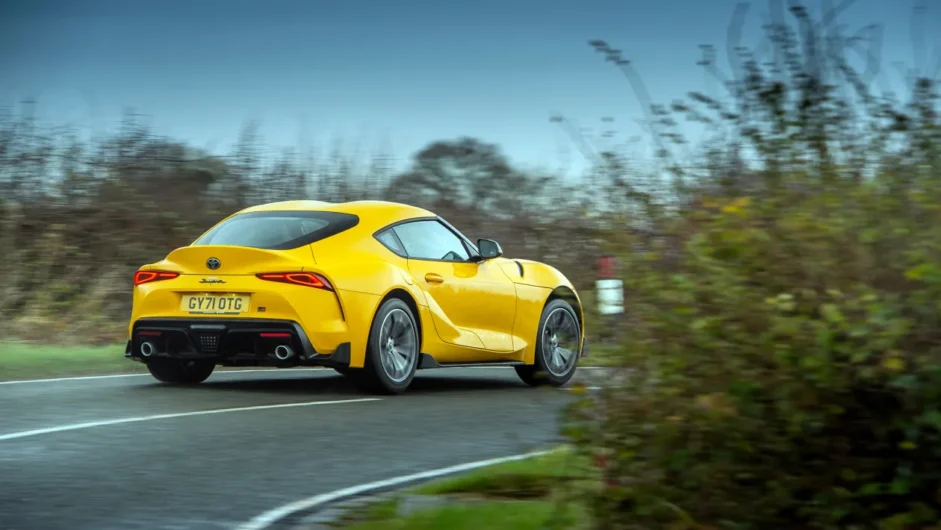
All GR Supras get LED headlights, a limited-slip differential, a suite of safety systems, adaptive cruise and an 8.8-inch media screen. The 3.0 model, meanwhile, adds a set of 19-inch wheels, a JBL stereo upgrade, head-up display and wireless phone charging pad on top.
Two solid colours are offered (Lightning Yellow and Prominence Red, the latter for an extra $780), and it’s nice to see a manufacturer offering bright shades. Opting for either White Metallic or Black Metallic adds $890 to the base price. Two new colours will join the colour range alongside the 2022 update, while a new beige interior colour option made from lighter seat fabrics should also give the interior a nice boost.
In terms of rivals, while the Cayman GTS 4.0 and Alpine A110 might have an edge in many areas, it’s worth remembering that both are now on life-support systems as their respective manufacturers have confirmed their successors will swap petrol for a plug in their forthcoming generations.
The new Lotus Emira is an exception to the sports car rule, but Lotus has also confirmed that it’ll be the last petrol-powered Lotus ever which could well leave the Supra as one of the last sports cars standing after BMW pulls the plug on the Z4 and Audi kills off the TT. Of course, Nissan is on track to launch the new 400Z, but it won’t find its way to Europe.
Engine, gearbox and technical highlights
Since the GR Supra’s launch, Toyota has diversified the range with an entry-level four-cylinder engine option and more recently a new and bespoke six-speed manual transmission option for the six. Given that BMW co-developed the GR Supra, and that it’s actually assembled by the European automotive industry’s Austrian fixer Magna Steyr, it comes as no surprise to see both engine options have come from BMW’s engine catalogue.
The four-cylinder is BMW’s well-known B48, a modular turbocharged unit that’s found across the BMW range and a few Morgans. Peak power is a relatively unstressed 254bhp at 5000rpm (the same unit makes 302bhp in some BMW models), but torque is very strong by comparison, with 295lb ft peaking between 1550 and 4400rpm. In that figure we can also see a manifestation of the engine’s character, which isn’t naturally conducive to an application in a sports car. In other words, while having plenty of shove in the lower half of the rev range, it falls away as they rise, leaving the final 2000rpm climb to the 6200rpm red line a largely redundant exercise.
The larger 3-litre in-line six is BMW’s B58 unit used over an even wider range of BMW models, from the Z4 and 3-series right up to the 8-series, and even in the Morgan Plus Six.
In the Supra it makes 335bhp from 5000 to 6500rpm, and 369lb ft from 1600 to 4500rpm. Overseas versions get a more potent variant with 382bhp, though the internet would have you believe the Supra is conservatively quoted in Europe anyway, so who’s really counting? The engine uses variable valve control and variable camshaft timing, a single twin-scroll turbocharger, and direct injection.
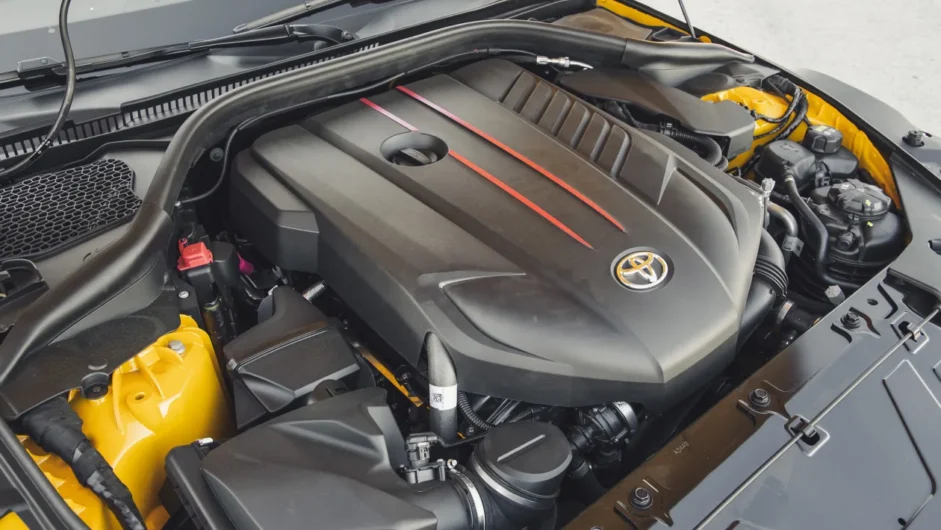
The transmission is an eight-speed automatic. Yep, the ubiquitous ZF unit, and controlled via a redesigned lever in the cabin. But later in 2022 Toyota will launch a six-speed manual option for the straight-six, which is interesting for a few different reasons. First of all, it should add to the engagement factor, but more enticingly it’s also a window into the amount of bespoke work that Gazoo is putting into the Supra’s continued development. That’s because rather than an off-the-shelf transmission from BMW or another supplier, Toyota has opted for an entirely bespoke manual gearbox that’s been designed with feel, response and engagement at the centre of its deliverables.
Another thing to note is that while the Supra was co-developed with BMW, and with seemingly many of its components, Toyota fundamentally led the development programme that explains why both the Supra and Z4 have such a short wheelbase and wide track – something out of kilter with the BMW’s evolutionary progression.
Toyota also says the two companies went their own way with chassis development once the basics – MacPherson struts up front, five-link rear, electrically assisted rack and pinion – had been decided upon. The Supra runs either 18- or 19-inch wheels front and rear, with 255/35 and 275/35 Michelin Pilot Super Sport rubber, which is a more aggressive, but older compound compared to the latest PS5 range. Dampers are adaptive on both engine options, with their calibration also due to be updated in the 2022 upgrade.
Despite its small dimensions, the fact it shares so many of its underpinnings with fundamentally larger BMW models means its kerb weight isn’t as light as it might have been. Four-cylinder models weigh in from 1395kg, but the six-cylinder raises this to 1495kg. The incoming manual will retract some of that weight disadvantage, with the new 2022 manual due to weigh 38.6kg less than the automatic, although that is taking into account a small selection of other weight-saving measures Toyota will introduce on all 2022 models.
Performance and 0-100 time
The way it goes about achieving that speed feels… well, quite BMW-like. There are worse engines to listen to than the 3.0’s straight-six, but the engine and transmission’s character is quite laid-back compared to Porsche’s 4-litre flat-six and Audi’s turbocharged five-cylinder in the TT RS.
Toyota has worked to give the car some aural character, and in the sportier driving modes there are the obligatory crackles when backing off the throttle. And seat-of-the-pants it feels comfortably as quick as the 4.3sec 0-100kph time suggests, punching hard from very few revs and the acceleration never really tailing off until you bump into the limiter. It responds well in-gear too, taking off with the merest hint of throttle input.
Perhaps it’s a symptom of the low-set driving position or the minimal glass area but it seems to accentuate the car’s performance too – there’s a proper muscle car vibe. The transmission is one of several areas the car feels short on interaction, as good though the ZF is, it’s not as sharp as the dual-clutch ’boxes offered elsewhere, and the process of switching the car into sport mode, knocking the gear shifter into manual and then changing down half a dozen gears just to wake everything up feels neither efficient nor fun, or interactive.
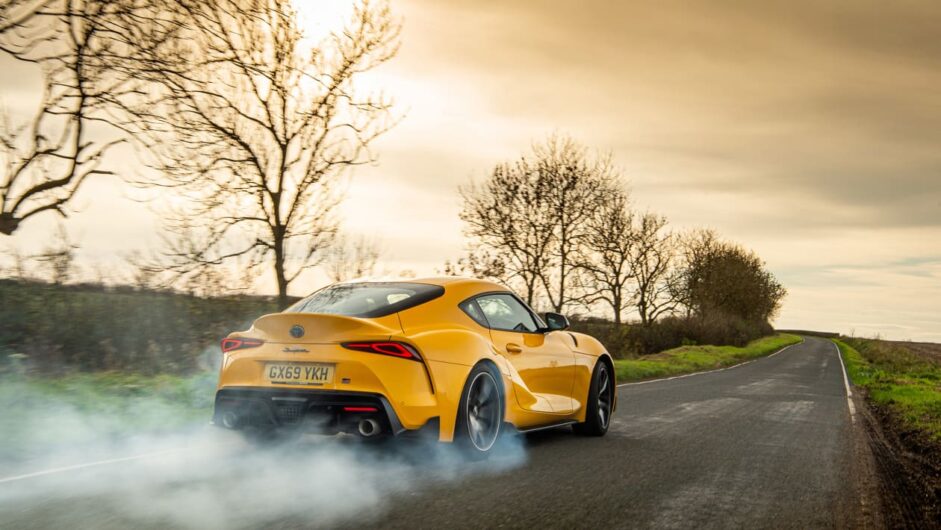
This is where the new manual comes in, as while it will almost certainly be slower on paper, the extra engagement instilled by needing to stoke the engine yourself should make a big difference day-to-day. The good news is that Toyota’s iMT auto-blip function has been integrated into downshifts, while the actual shift action has been intensely developed by Gazoo Racing, too.
The entry-level 2.0 model’s performance on paper is impressive, with 100kph reached in just 5.2sec, but that’s about where the 2.0’s performance good points end. As it is in most other applications, the B48 just doesn’t make a very good fist at being a sports car engine. Its low-down torque negates it having any enthusiasm to reach the red line, and while the engine is responsive, you find yourself driving it like a diesel, relying on the torque and short-shifting up the transmission to keep it in its useable (rather than sweet) spot. All Supras have a 250kph top speed.
Ride and handling
Front-engined, rear-drive, and low-slung – the Supra is the traditional sports car layout, and Toyota claims the centre of gravity is low, too. Throw in a decent hit of power to the rear wheels and you have the makings of an entertaining driver’s car, and to a degree that’s exactly what you get.
If the drivetrain feels BMW-like, then there’s definitely a different character to the chassis. It starts with the steering, which is lighter than that of equivalent BMWs, with less of that ‘gloopy’ feeling that pervades many of the German brand’s cars.
The response is good, too, and there’s fairly natural weighting as you wind on lock, but one thing missing, at least at road-going speeds, is any real information. This improves on a circuit – it’s clearly a steering set-up that responds well when there’s some load going through it – but does leave the Supra’s front end feeling slightly aloof on the road.
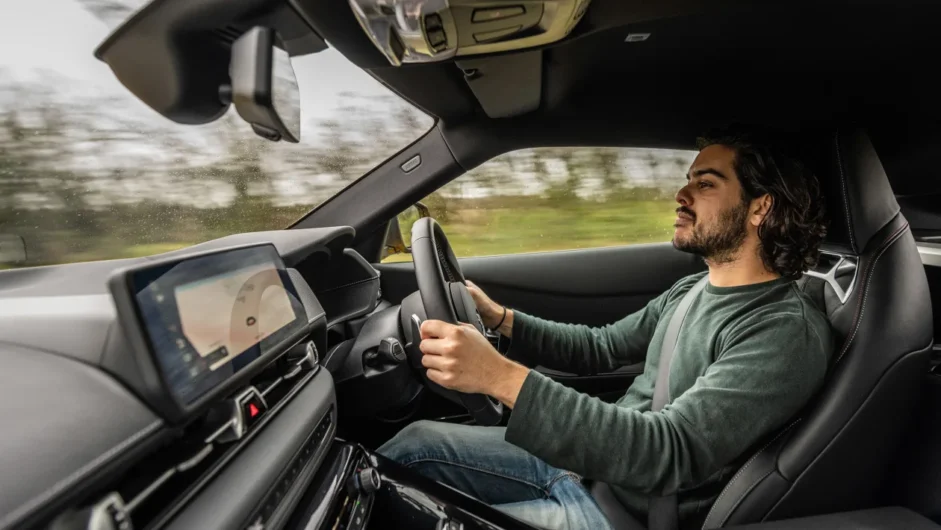
You won’t have to worry too much as it’s not a car short of front-end bite. You can occasionally feel the car’s weight, usually when a quick direction change is required, but there’s plenty of grip to exploit and good mid-corner balance. On dry roads at least the Supra feels progressive on the throttle, though the BMW six’s rapid build-up of torque means on greasy or wetter surfaces it’s not difficult to break traction, something the steering is quick enough to deal with.
One of the more surprising aspects of the Supra’s dynamics is its mature ride quality, which takes the edge off sharper bumps but offers plenty of control over larger undulations. The structure feels particularly stiff too, so (not unlike recent BMWs) there’s a real sense of integrity to the car, and supportive, comfortable seats and a cabin relatively well-insulated from road and wind noise makes the Supra an adept cruiser as well as an accomplished handler.
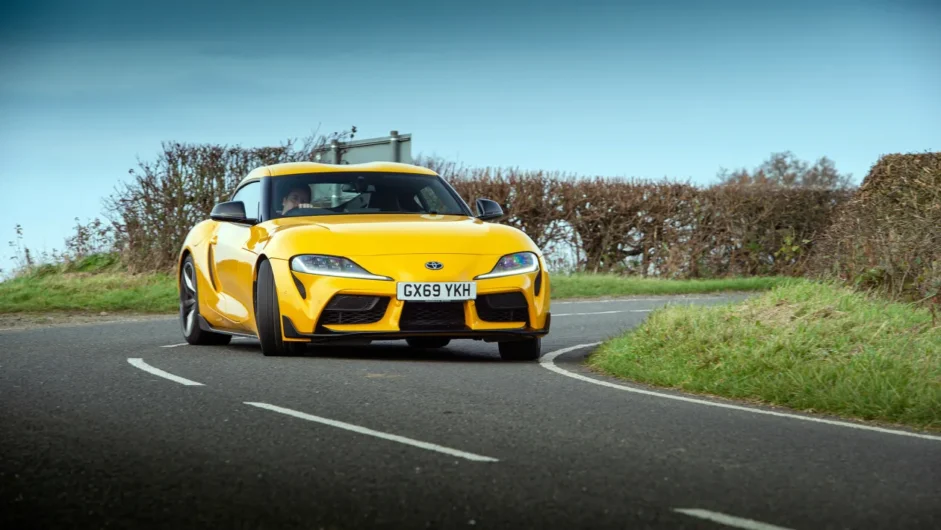
Unfortunately when you really begin to exercise the chassis, it doesn’t respond with so much clarity, as you feel like you’re constantly having to manage the weight and momentum of the six-cylinder up front. This could be due to its mass, but also feels like there could and should be more control across the front axle. This is where the supple ride and impressive isolation shows its compromise as it feels like the bushing and spring rates are lower than ideal. And when combined with the McPherson strut front suspension that generally doesn’t have the controllability of a more expensive double-wishbone set-up, it makes for a vagueness around the front end that doesn’t instil masses of confidence. This is then added to by the rear end’s sometimes snappy nature when putting power on – a natural reaction of having a relatively short wheelbase and wide stance.
The four-cylinder actually fixes some of this front-end vagueness, with less weight and taller sidewalls on the standard 18-inch wheels that make the whole car feel pointier and more agile. It’s not night and day, but with less mass to control, and less power coming out of the powertrain to worry about balancing at the rear, it makes for a more satisfying car to drive.
All we’d really ask for is that extra element of interaction missing from more talkative steering and a more engaging power plant and transmission, something that might well be on the way with the new manual model and its associated chassis updates. And when lined up against the Alpine A110 and Porsche 718 Cayman, those elements really matter.
L/100km and running costs
Big performance no longer comes with the consumption penalties it used to, at least not on paper. With a WLTP combined figure of 8.1L/100km the Supra promises decent cruising economy, and it largely reaches those targets in day-to-day driving.
Toyota offers a CO2 figure measured on the WLTP cycle at 185g/km. For VED the latter applies, meaning a first-year tax figure of $700 for the 2.0 and $1130 for the 3.0. Tax then drops to $820 for both for the first five years taking into account the $50,000 valuation surcharge, before dropping to $200 per year thereafter. Insurance-wise Toyota quotes group 37E-38E, and here it gets a healthy five-year, 160,000-kilometer warranty.
Despite the variation in diameter, the relative width of all Supra tyres means a front pair of 255-section Michelin Pilot Super Sports will come in at over $390, fully fitted and delivered from Blackcircles. A pair of wider 275 rears tips over the $480 mark, though if you wanted something less extreme – Pilot Sport 4 Ss, for instance – they will both last longer and cost less upfront.
Interior and tech
Stepping into the Supra undoubtedly feels special. The seating position is low-slung, with a dramatic view out through the pillar-box windscreen and over its long, curvaceous bonnet. It feels like you’re sitting over the rear axle, too, which is always an interesting attribute, while quality levels feel high.
It doesn’t half feel gloomy though. If the Supra is a Japanese car with German underpinnings, built in Austria, its interior design is equally confused, with a combination of shapes and elements that look sort of familiar, but with a definite Japanese overtone. Some special-edition models, and the incoming 2022 model year car, have been made available with brighter interiors, the latter coming with a new beige colour wave, but overall the design is smart, straight-laced, and if anything a little dull, and too keen on the ‘stitching in plastic’ habit BMW and Toyota are guilty of falling into.
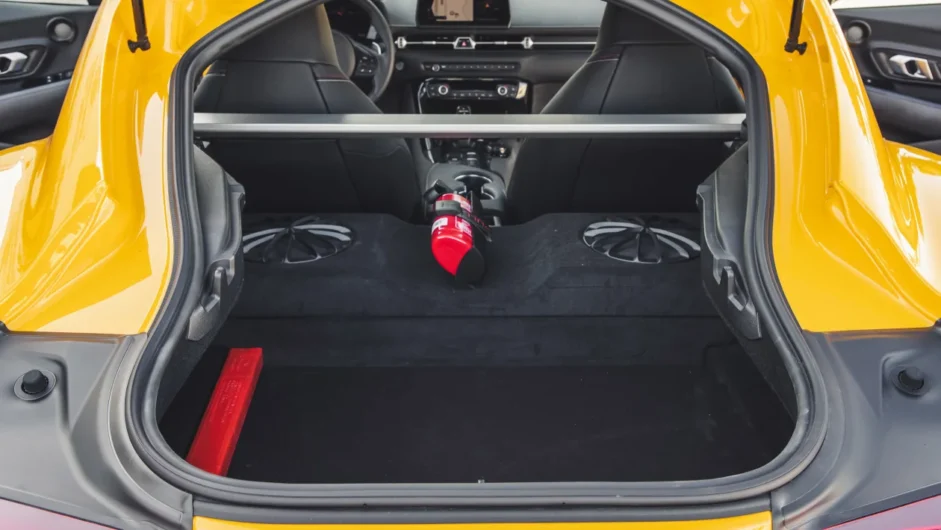
It’s not long before you start playing ‘spot the BMW bits’, either. The steering wheel is based on one of BMW’s older designs, but comes with a new (and overly large) steering boss and a thinner rim. The gear selector has the same BMW base with a new casing, and the minor switchgear and central infotainment screen are straight out of the parts bin, too. Even Toyota’s stalwart 1980s-style LCD clock is nowhere to be found…
The overall shape of the dashboard is pleasing enough though, and the instrument cluster is more unique. We’ve found its tachometer needle a little difficult to see, but otherwise it’s all clear enough. The seats are great, too, both supportive (particularly in the standard car with grippy Alcantara) and comfortable.
There’s very little to complain about here in terms of tech or interfaces. The iDrive-style controller is effective, the shortcut buttons useful, and the menus easy to navigate. For that matter, the physical controls for the heating and ventilation are similarly useful.
Design
Whatever Toyota has or hasn’t changed under the skin, the Supra’s skin itself is every bit a Toyota design, and an original one at that. There’s little here to visually connect the Supra to Toyota’s other sports car, the GT86, and beyond a slightly bulbous nose that Toyota has applied recently to other models in the range, the design is entirely fresh.
Whether it’s successful or not depends on your view of all the scoops and slats – many of which are non-functional, at least on the road car – and the car’s exaggerated curves. View the car from a low angle and it’s quite appealing, with a taut shape and some interesting details, such as the ducktail spoiler at the back. From higher angles there can appear to be a little too much metal, though you’ll get a good view of the Zagato-like double-bubble effect to the roof.
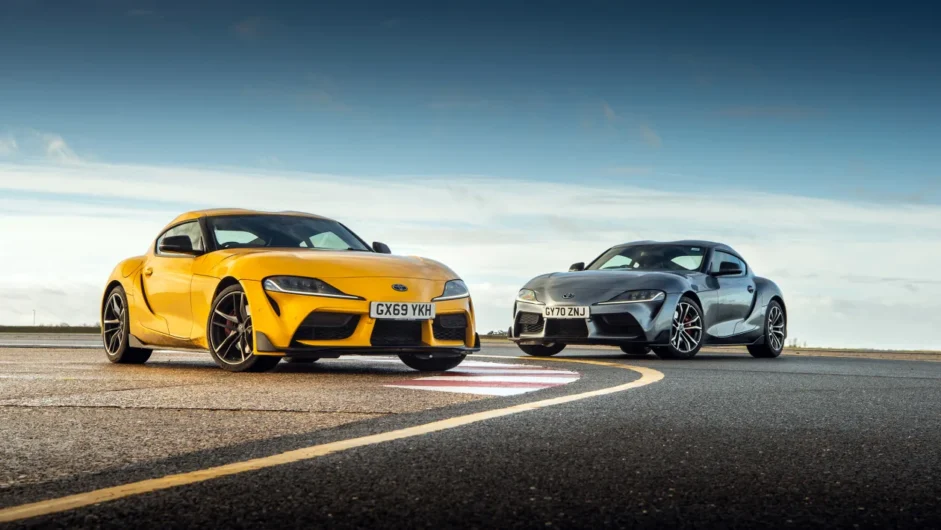
It has proper front-engined, rear-drive proportions anyway, and while it might share its platform with the current BMW Z4, it’s the first-generation Z4 Coupe that comes to mind in the long bonnet and short cabin. It looks squat and wide, too, which is rarely a bad thing for sports coupes.
Fundamentally, all Supras look the same, save for the wheel designs. Despite helping out with the ride, the 2.0’s smaller 18-inch units can look a little under-wheeled compared to the 19-inch design on the 3.0, which not only look more dramatic with their twisted spokes and chrome inserts, but also accentuate the aggressive offset dialled in by Toyota.
New 2022 3.0 models in both manual and automatic forms pick up a set of less glamorous, but lighter forged 19-inch units with a design that’s not dissimilar to that of the Enkei units found on the GR Yaris. Order right now and you’ll be limited to either non-metallic red or yellow hues, or just two metallics – black and white – but there are two more colours coming with the 2022 update.
This article originally appeared at evo.co.uk
Copyright © evo UK, Dennis Publishing

